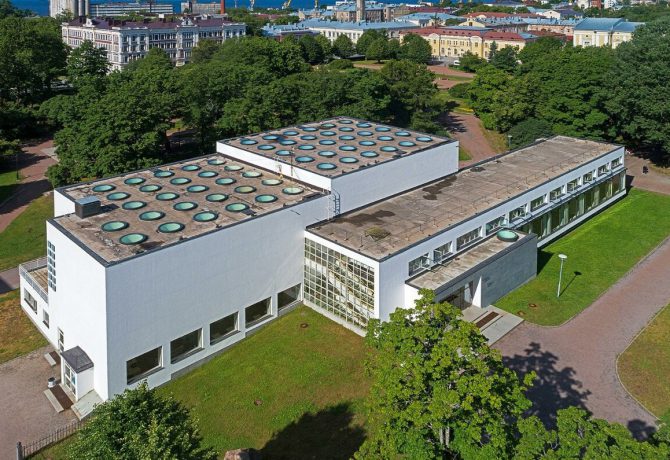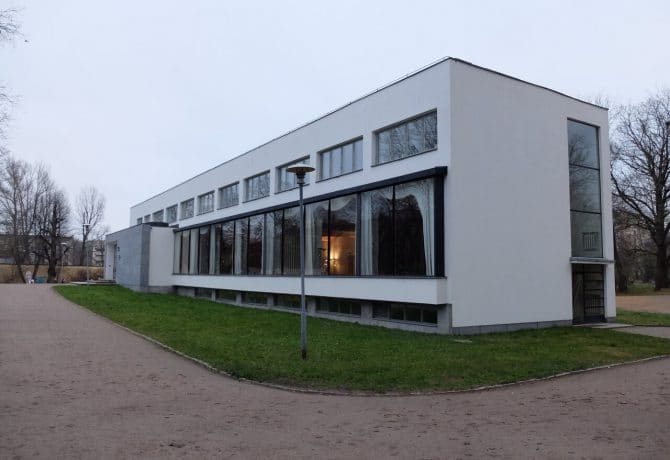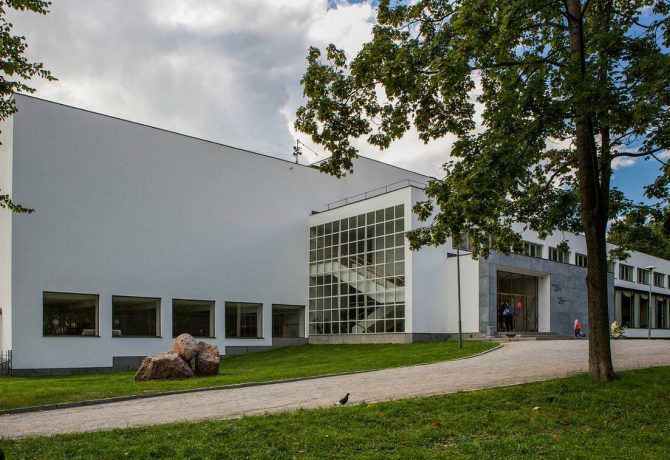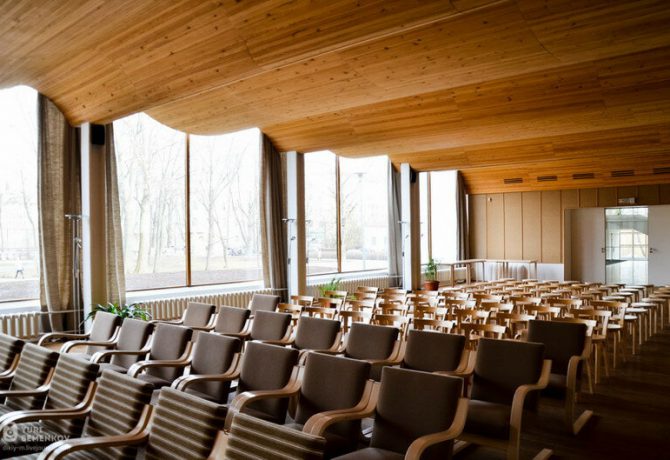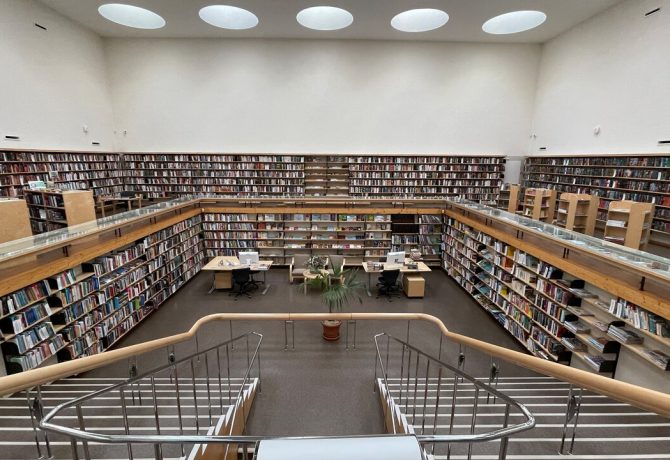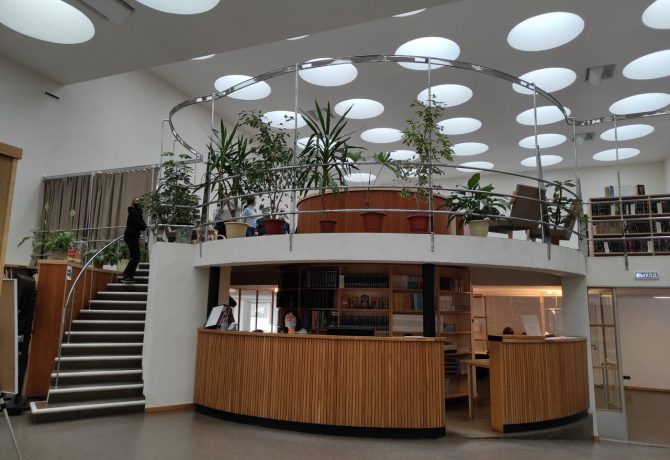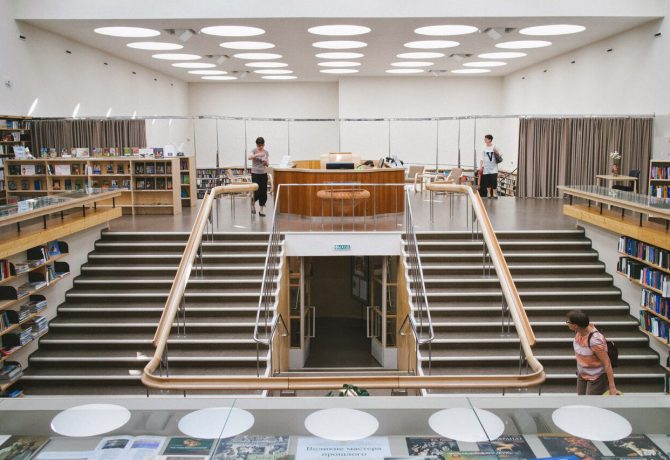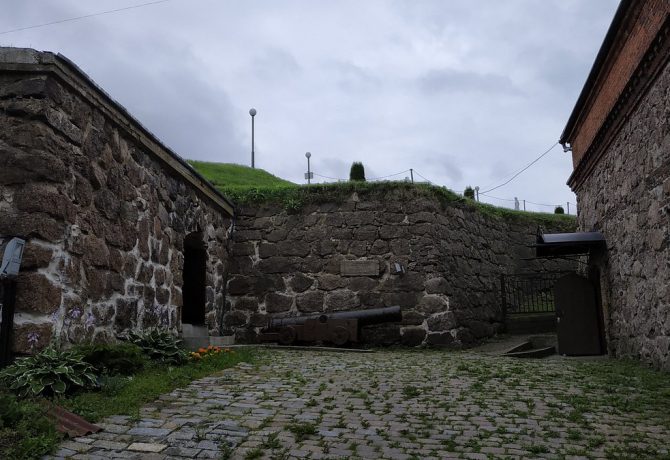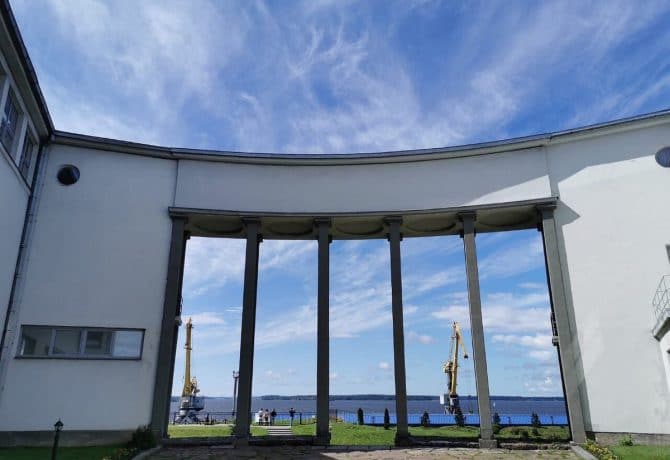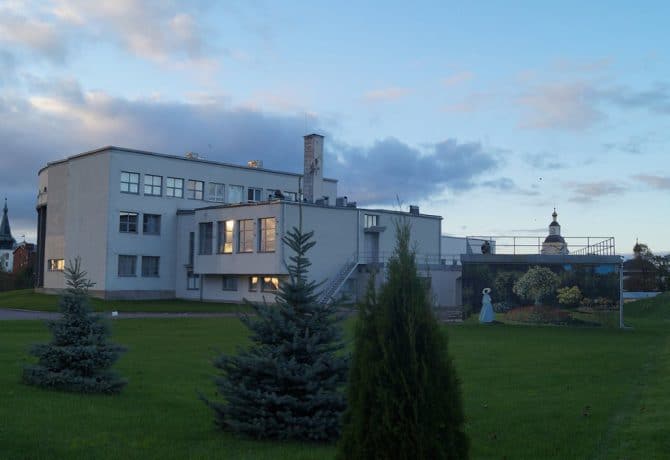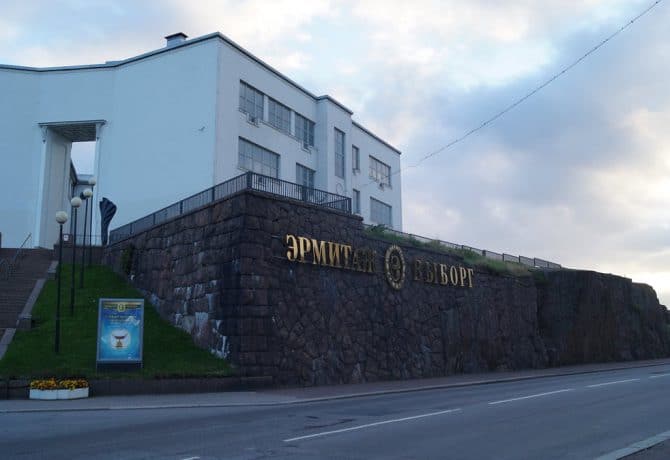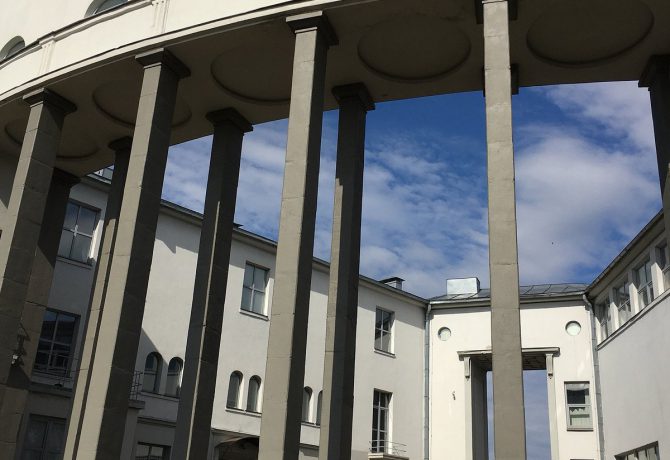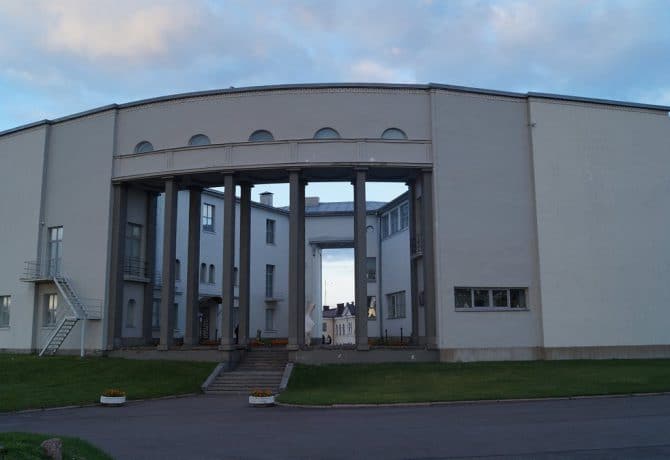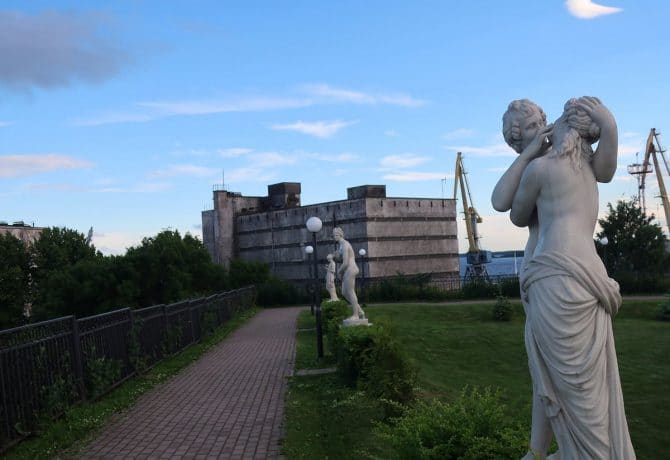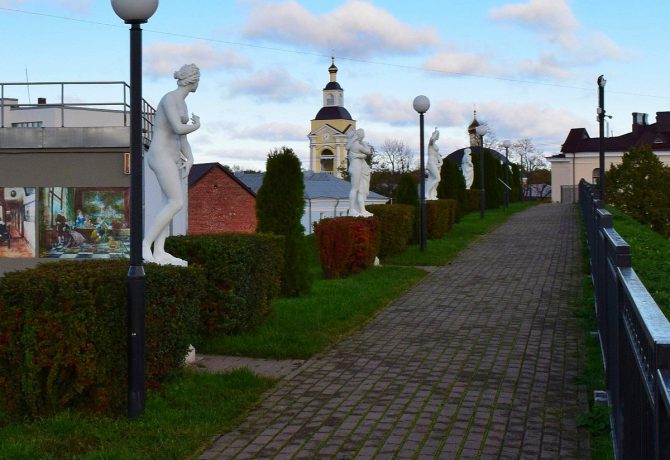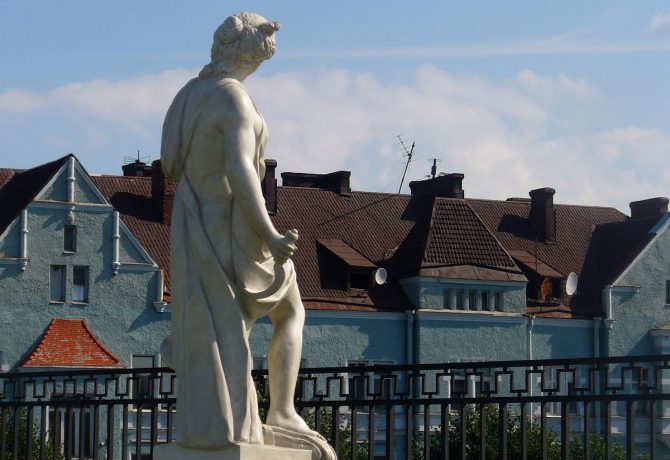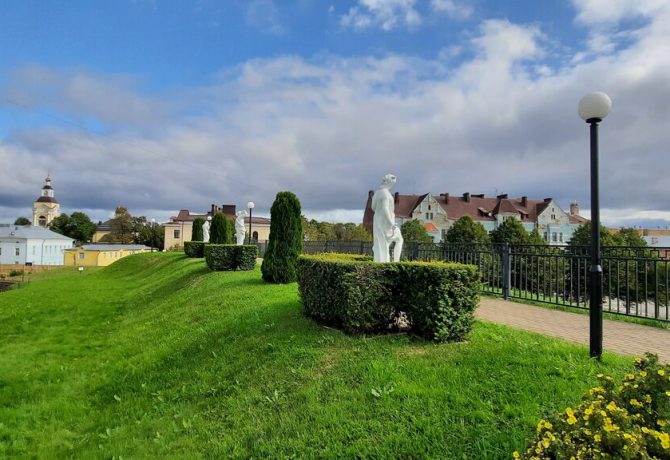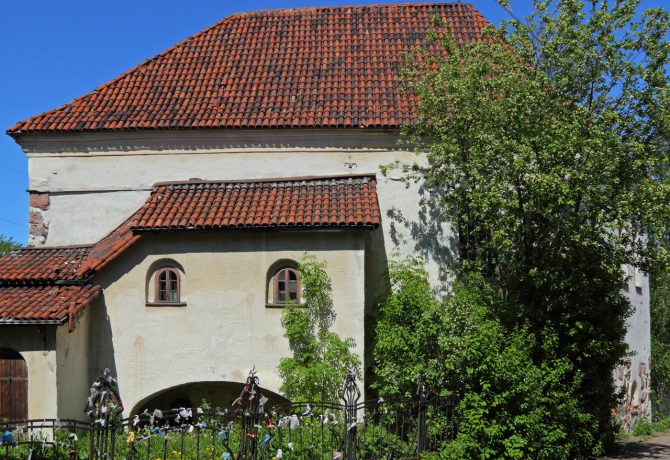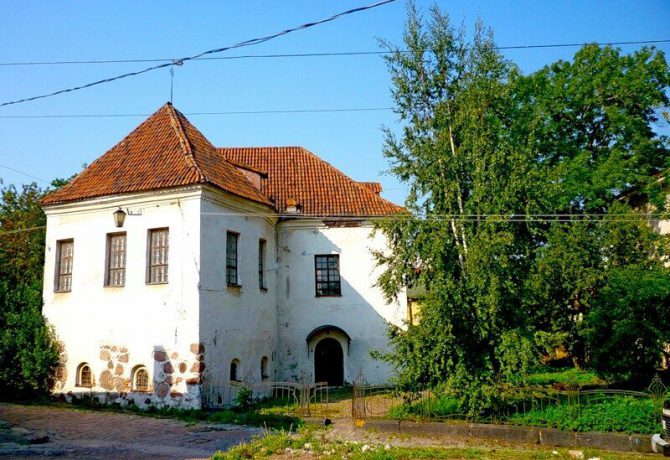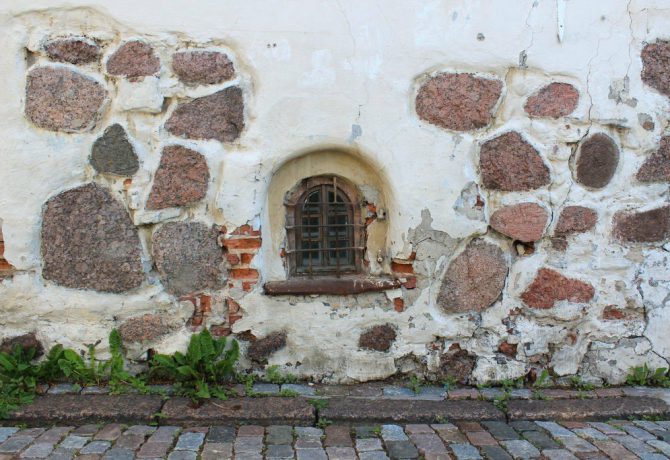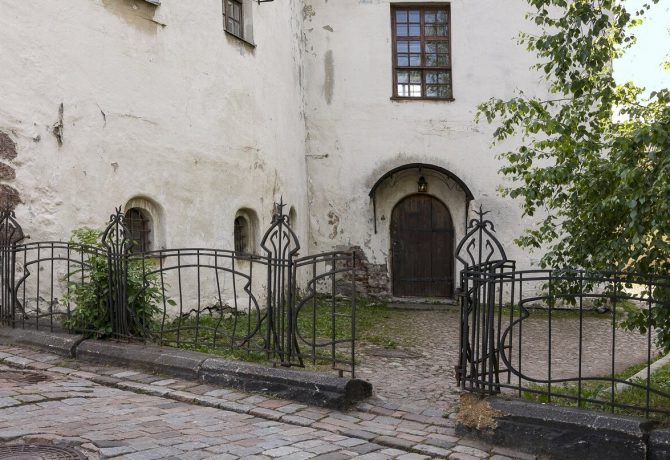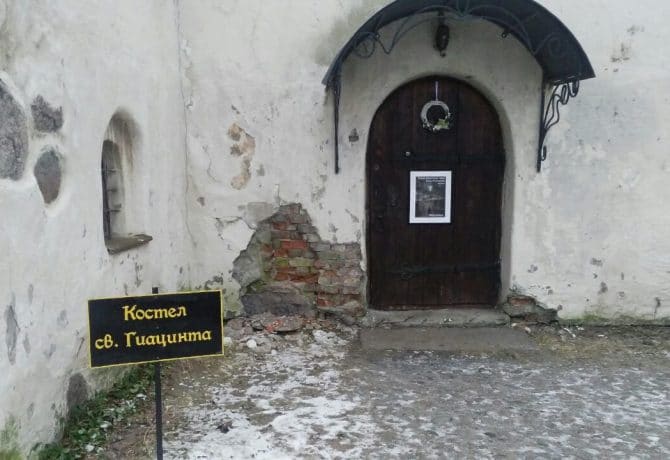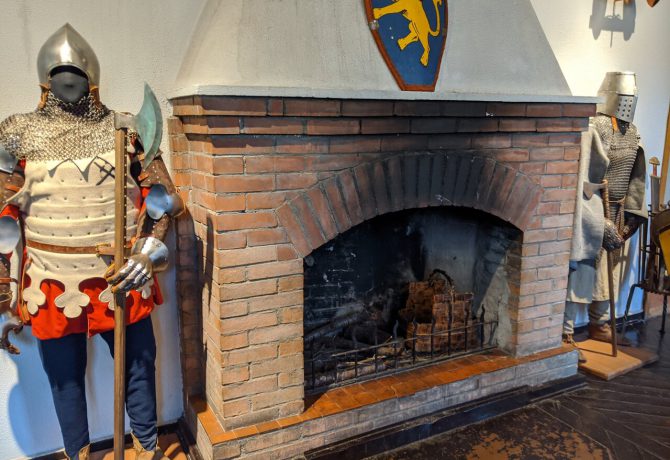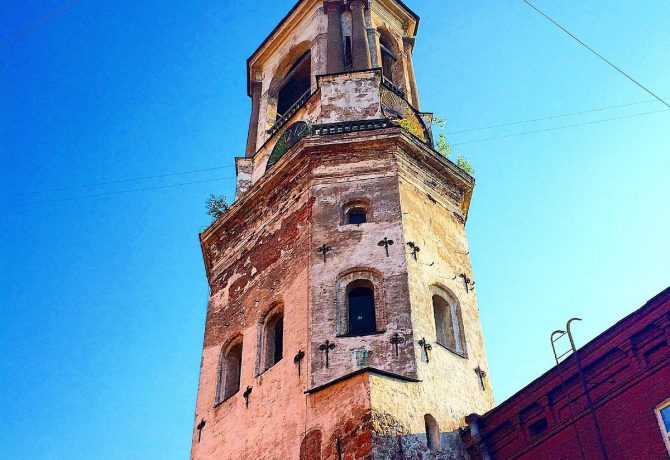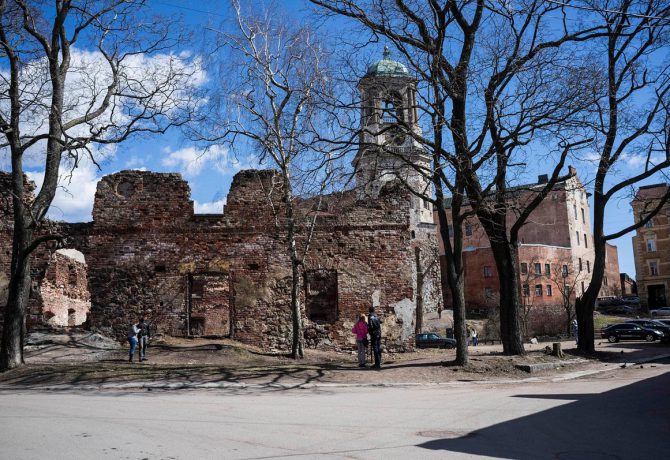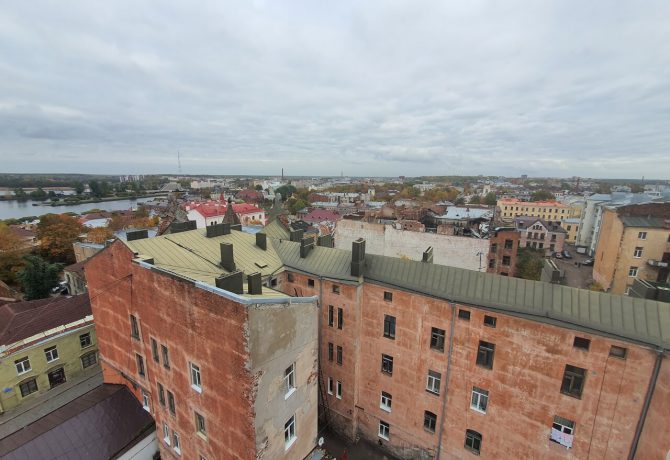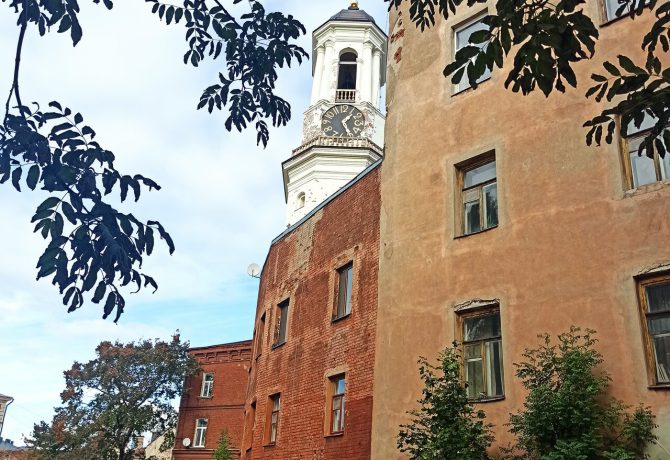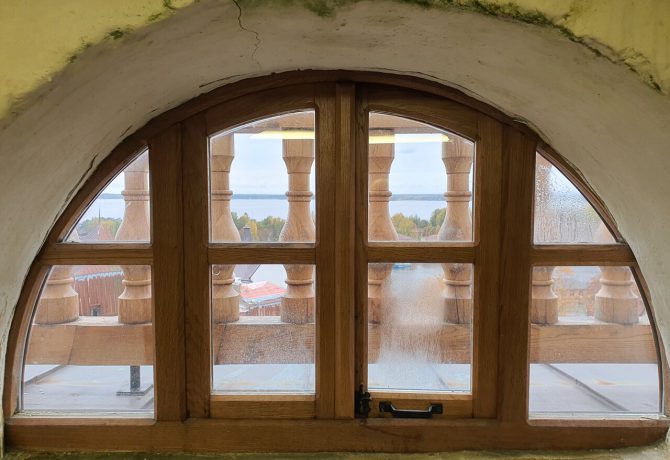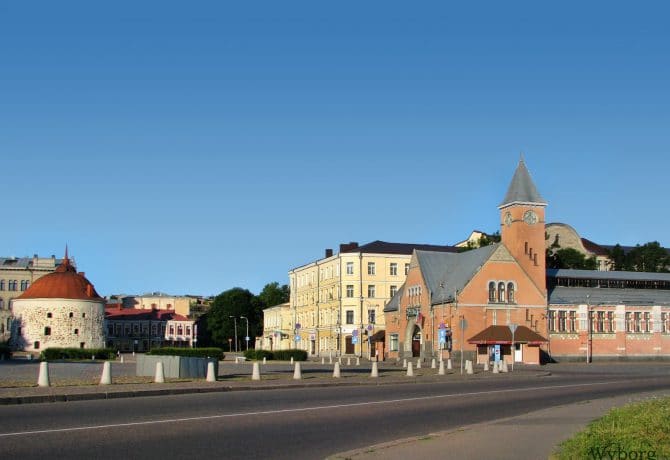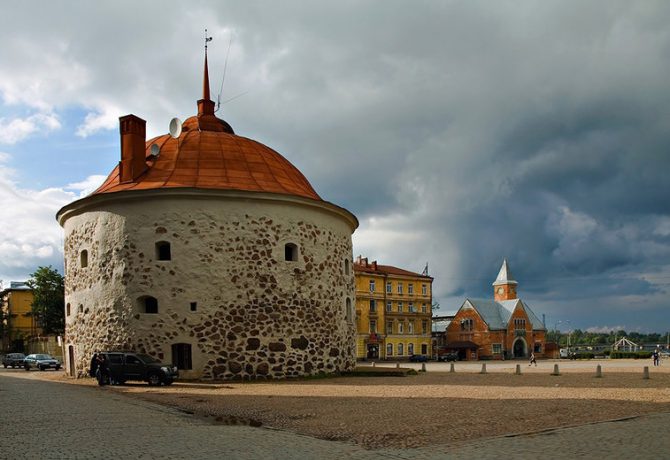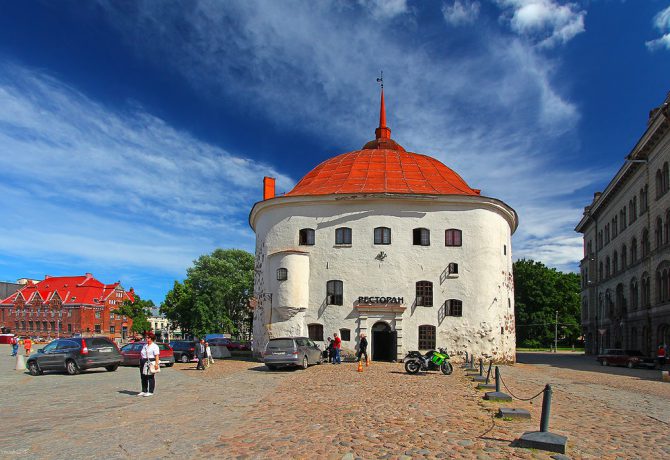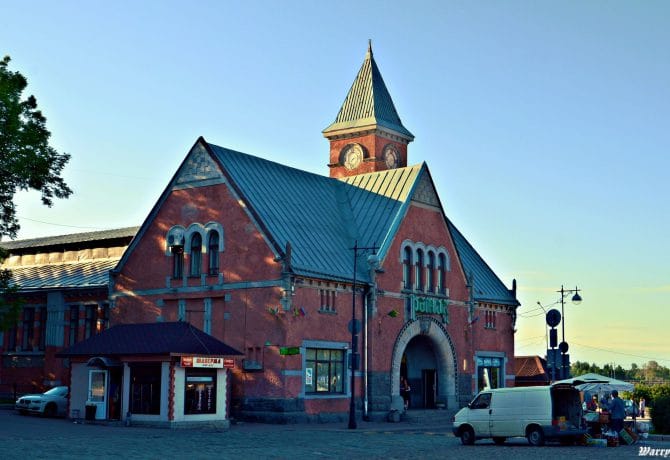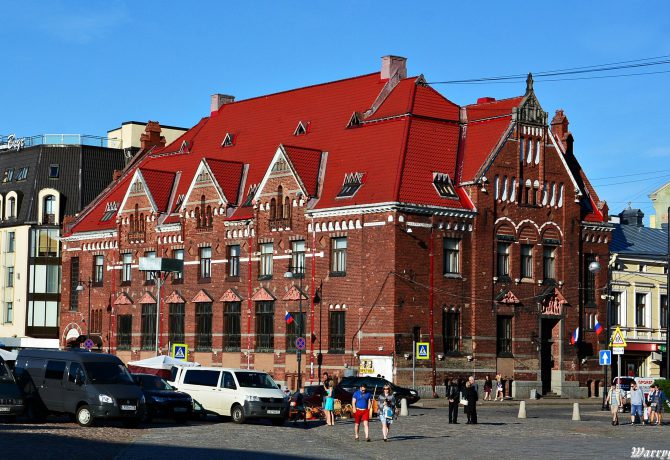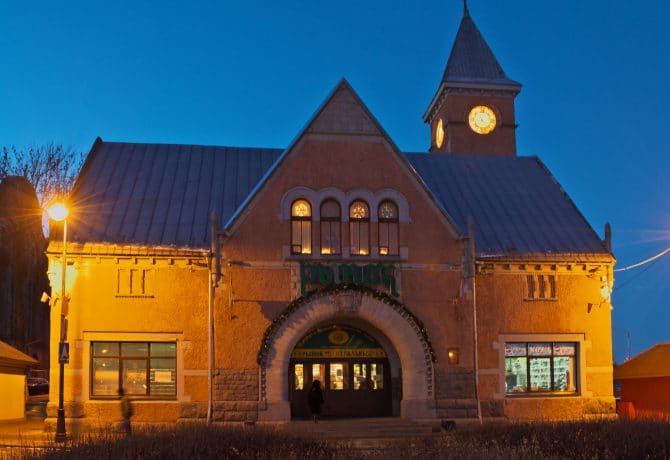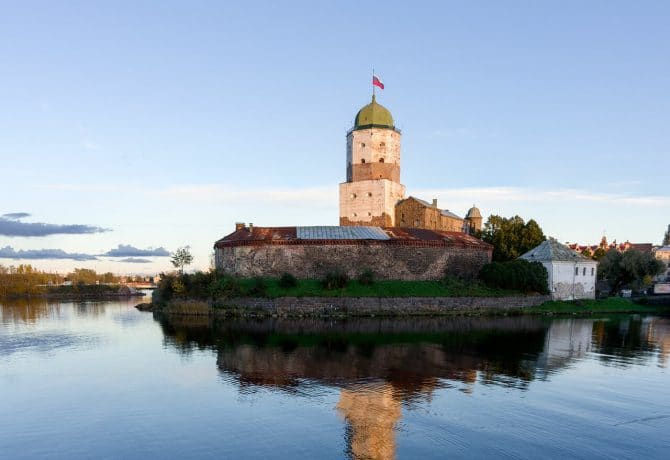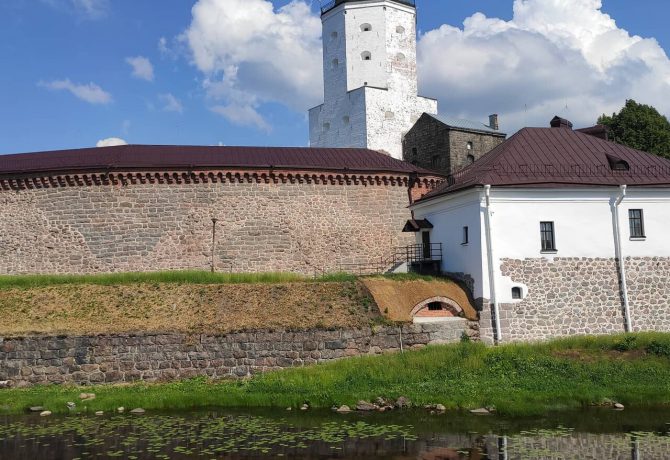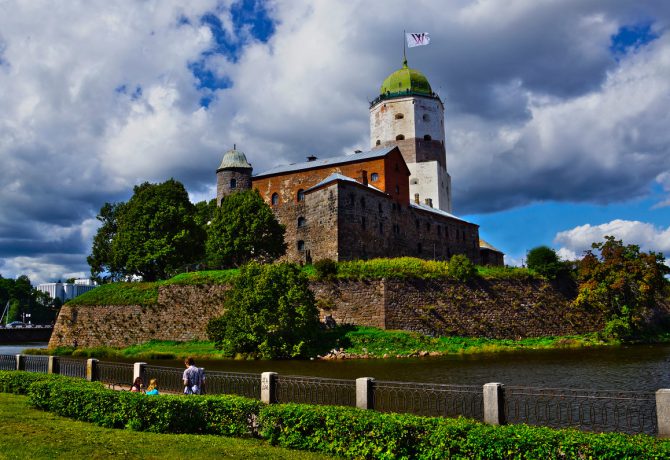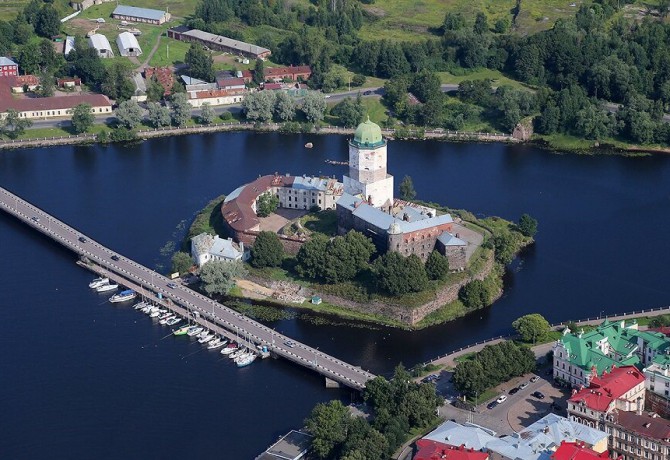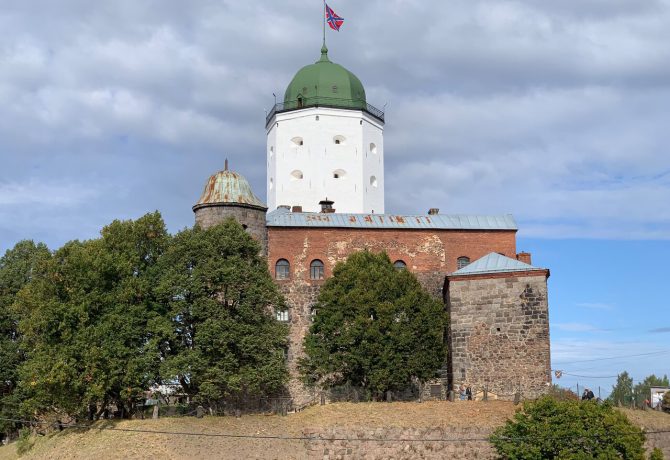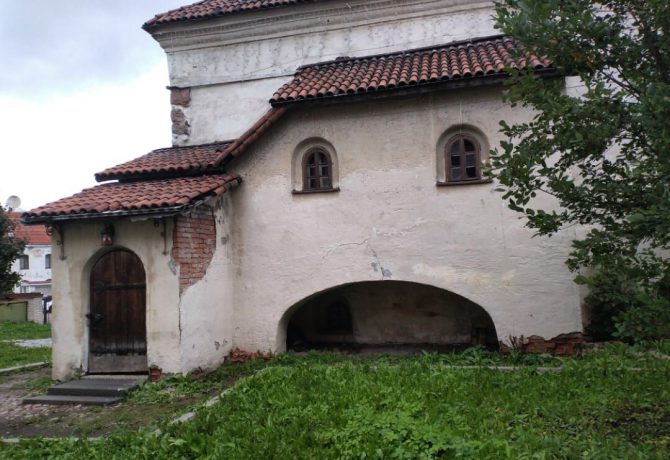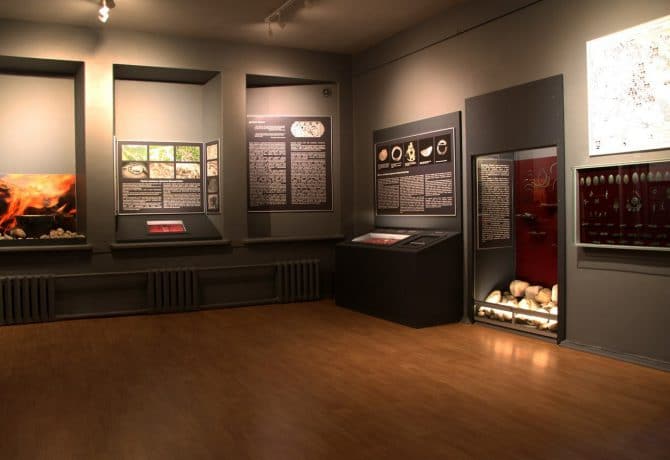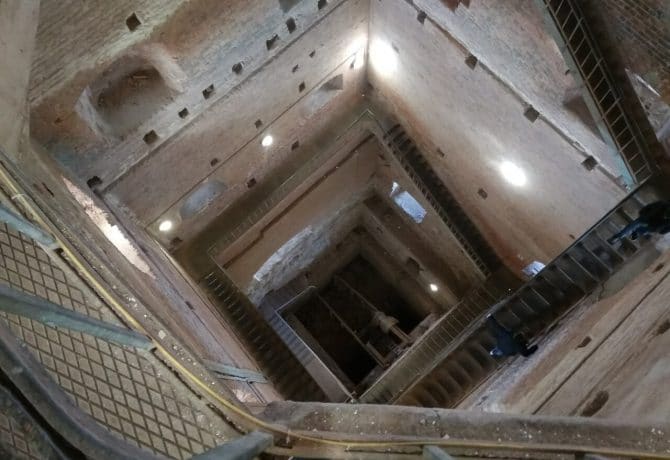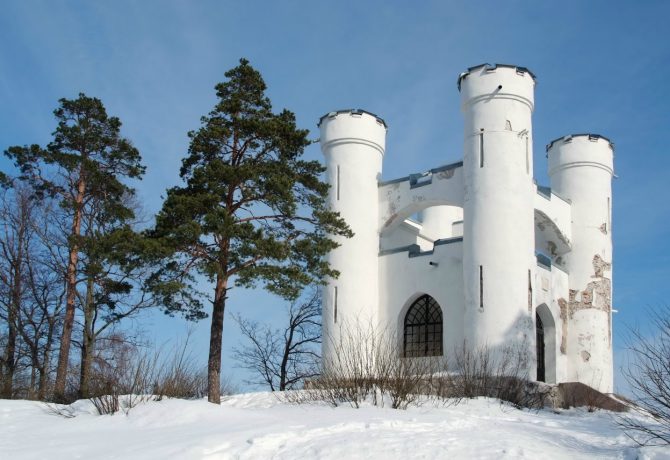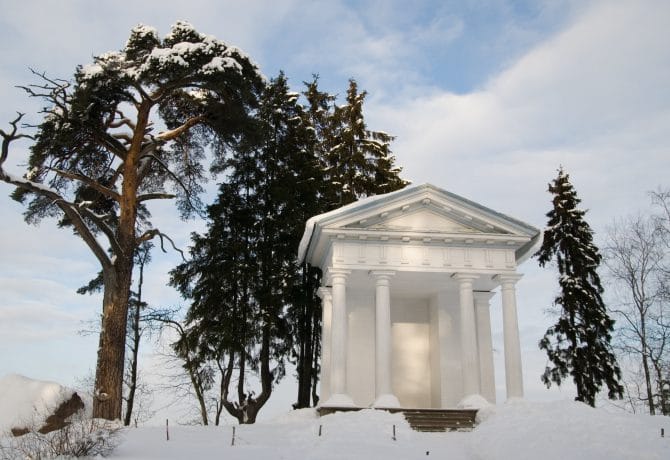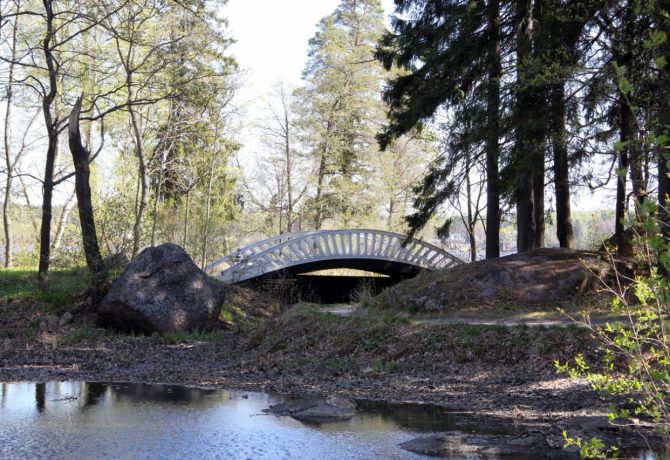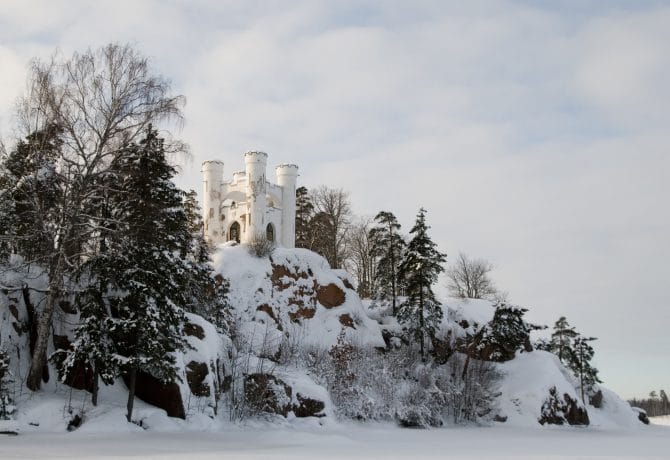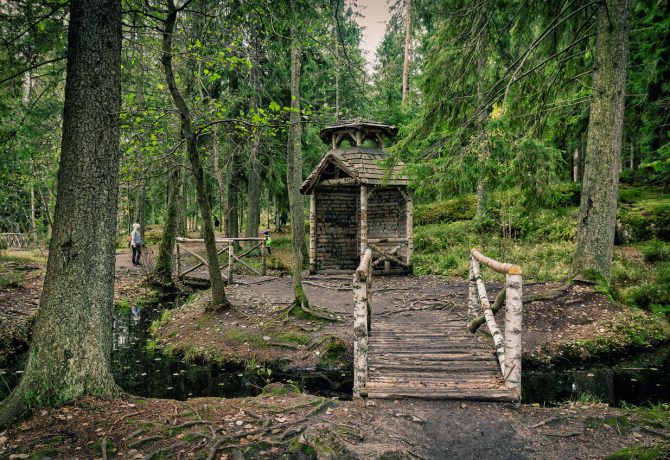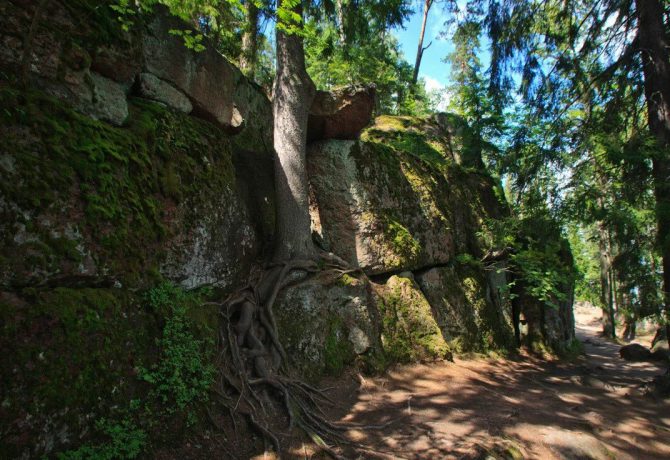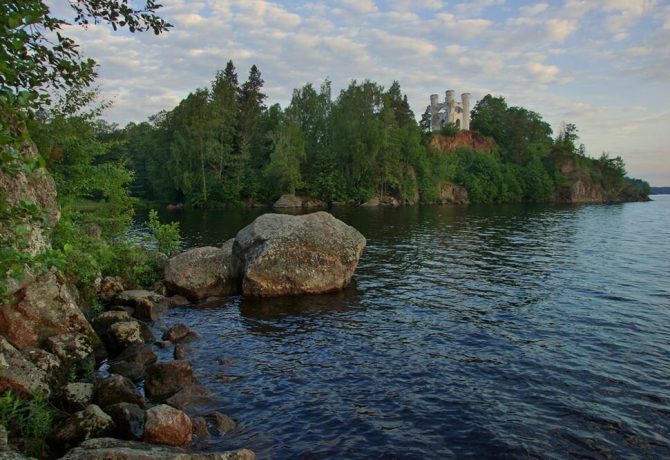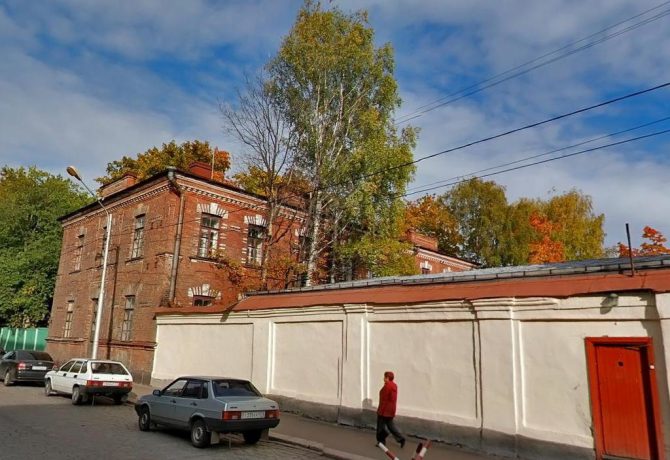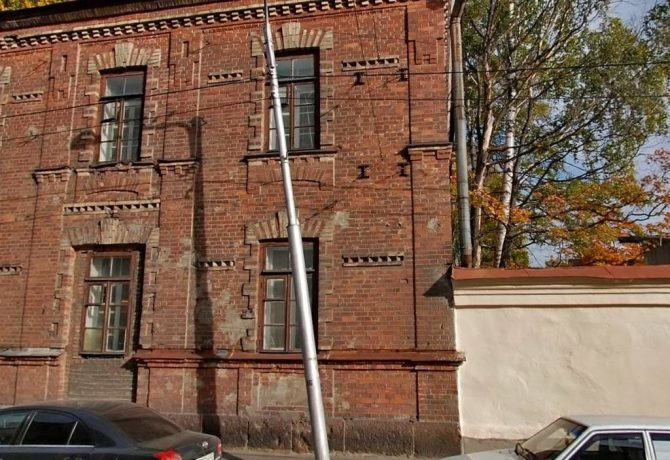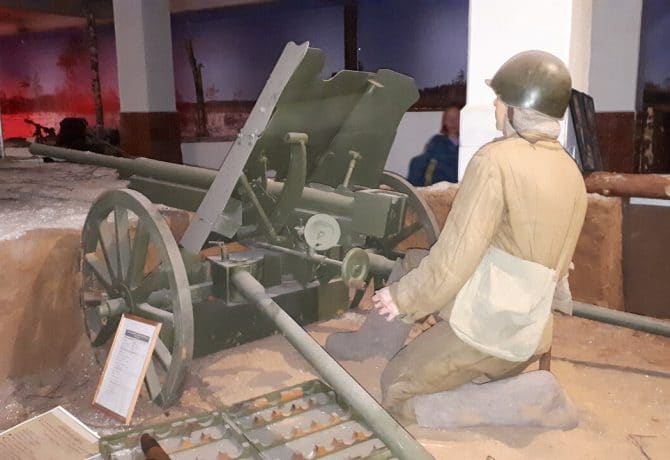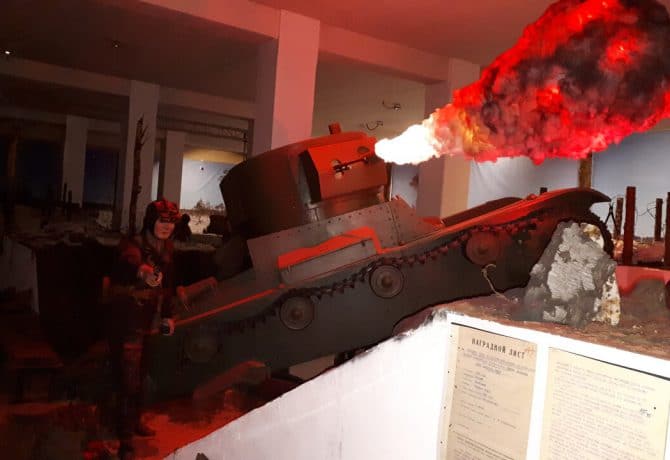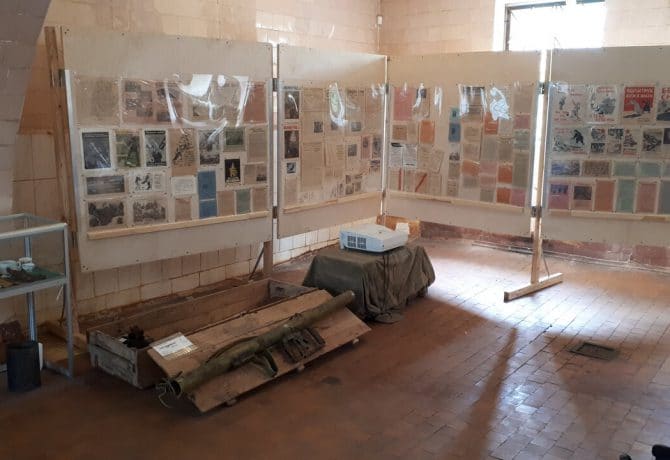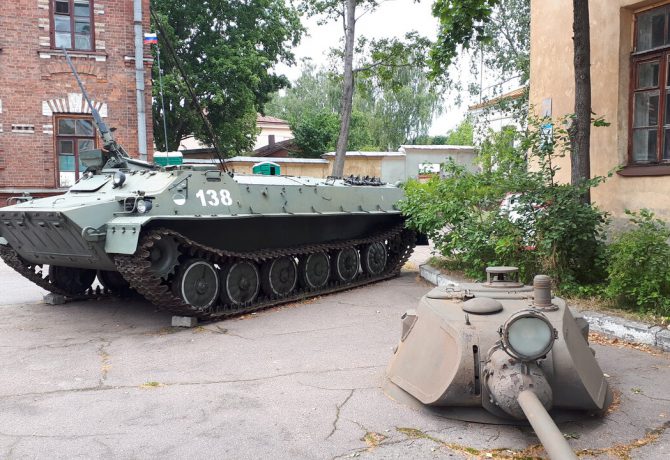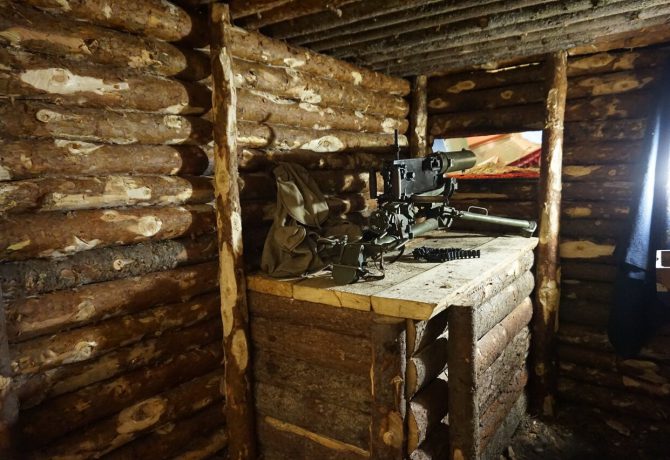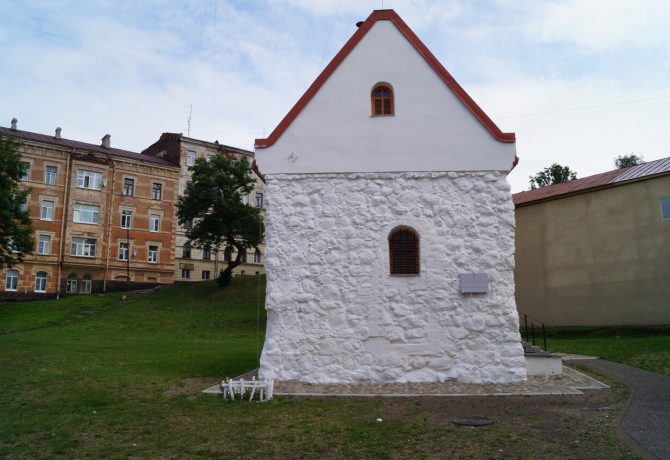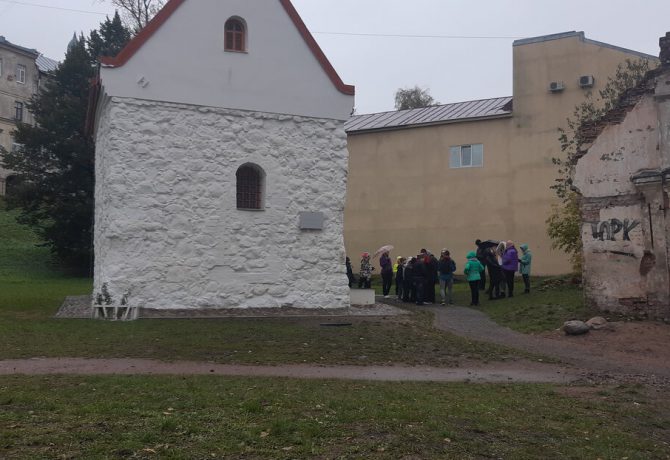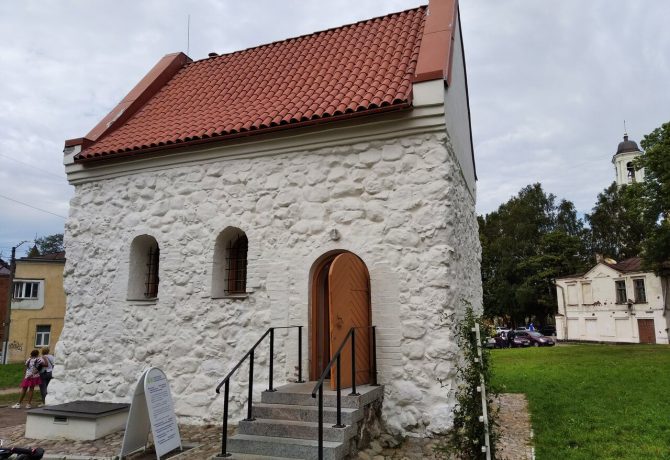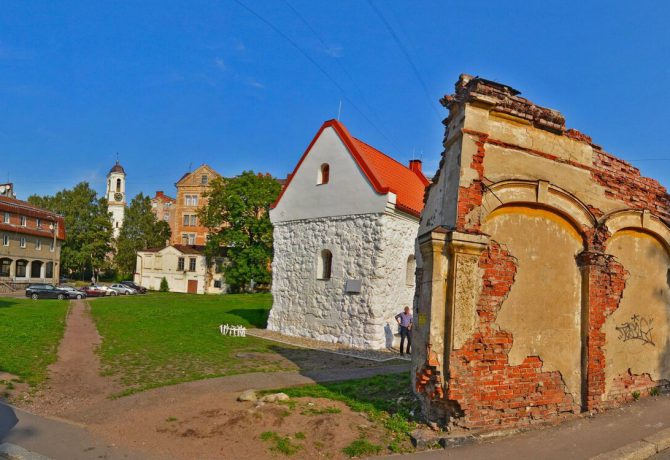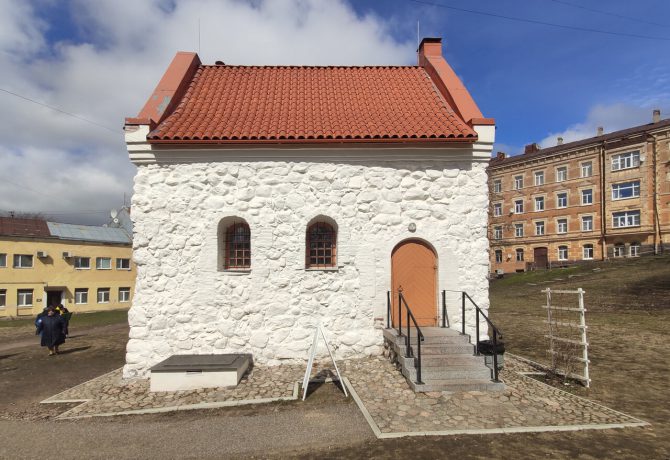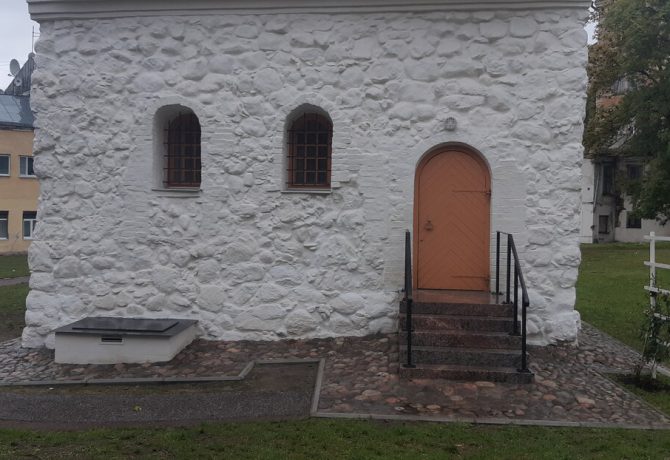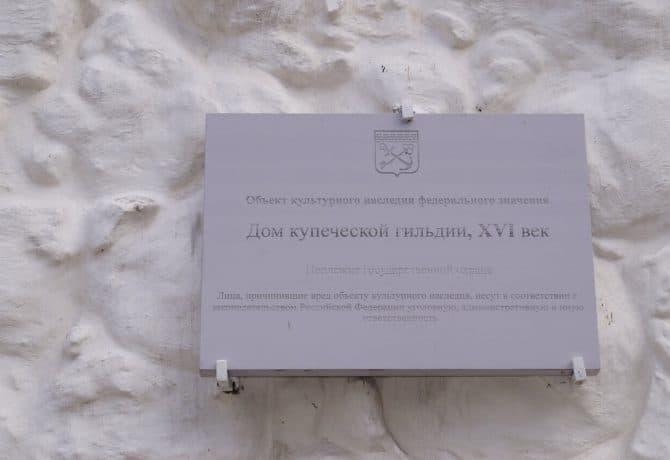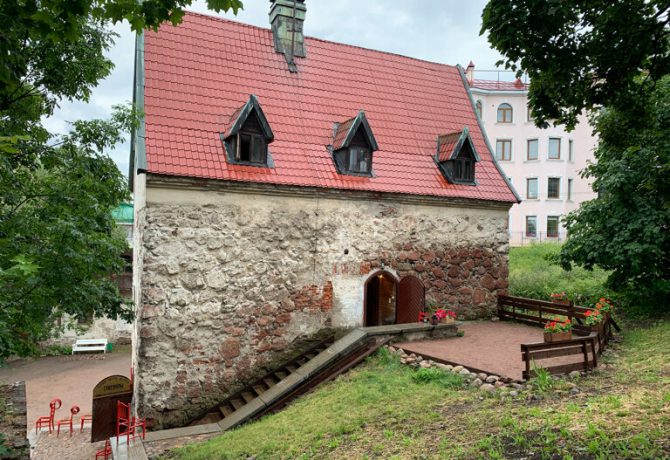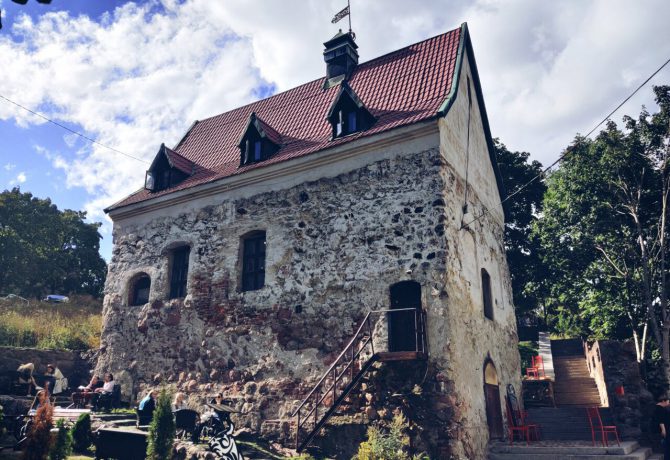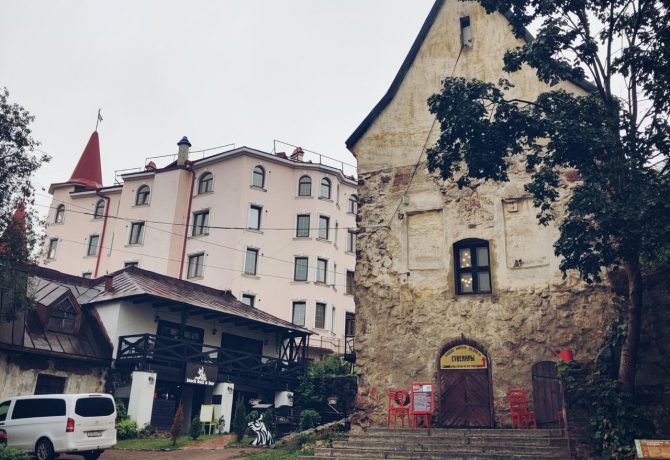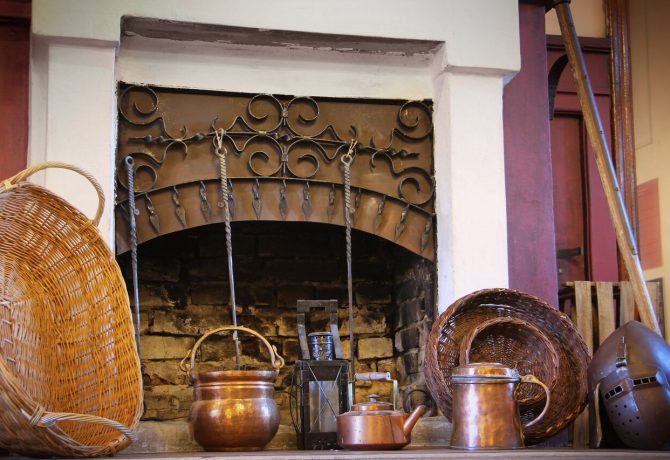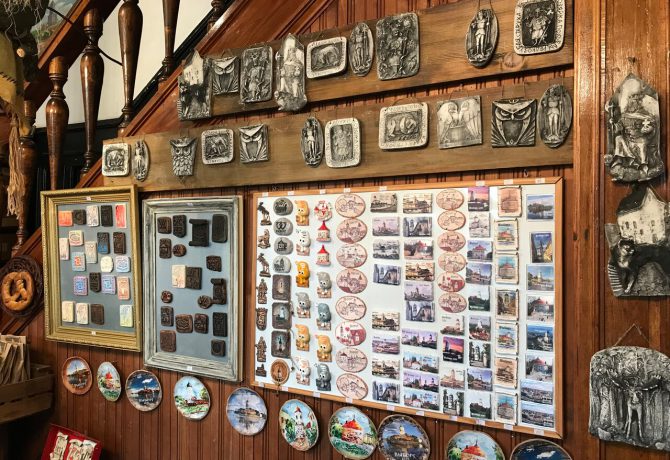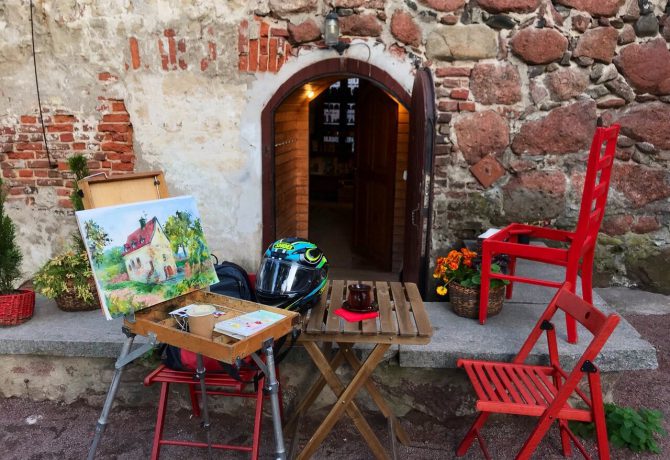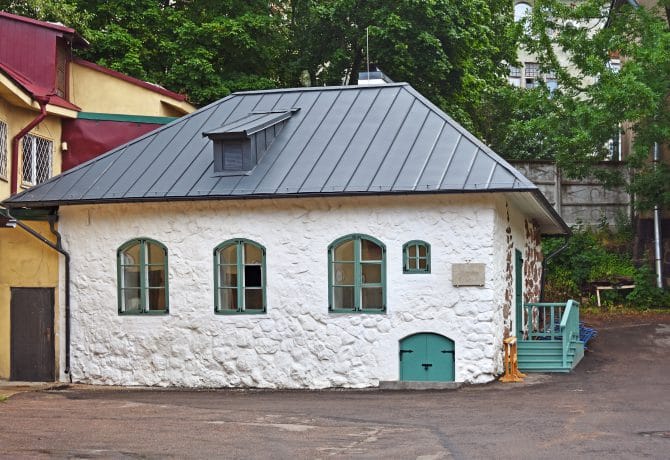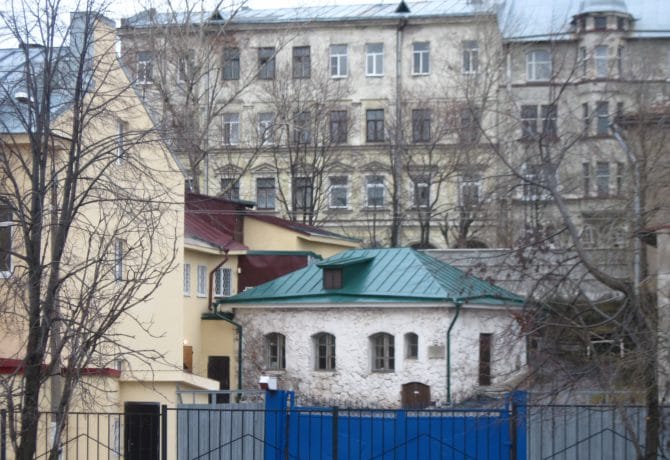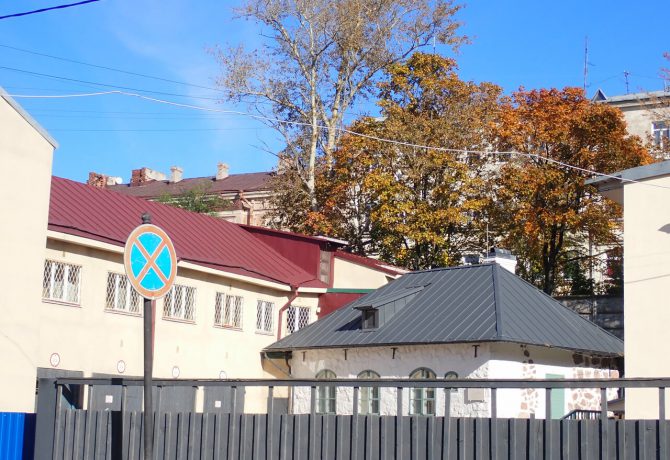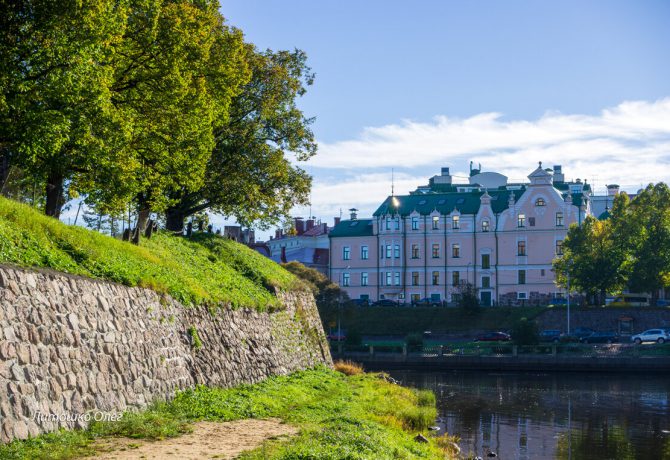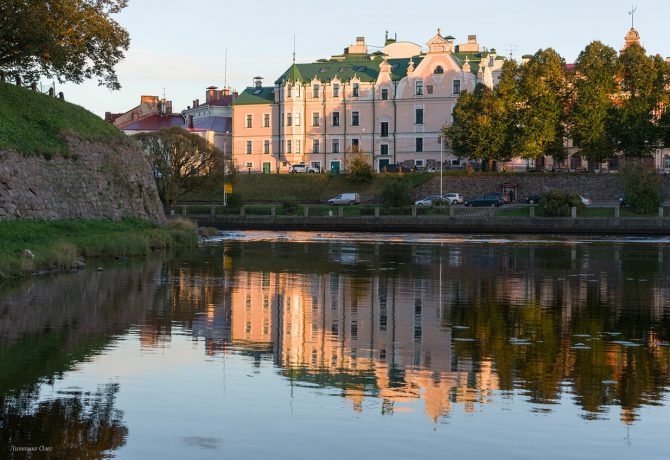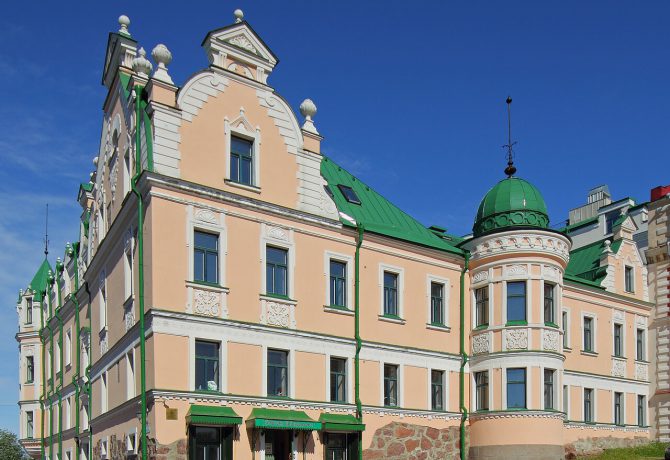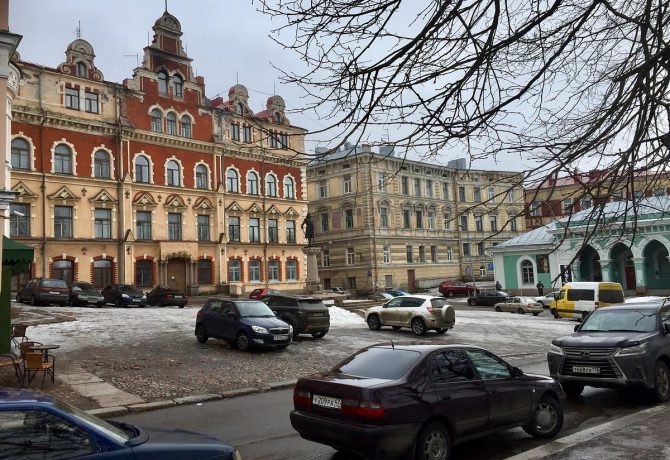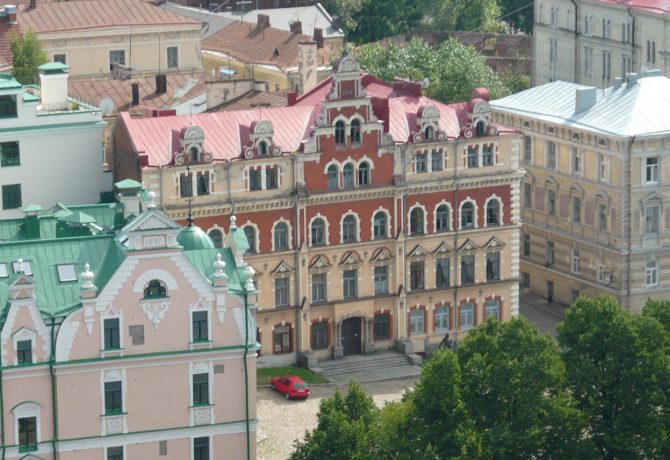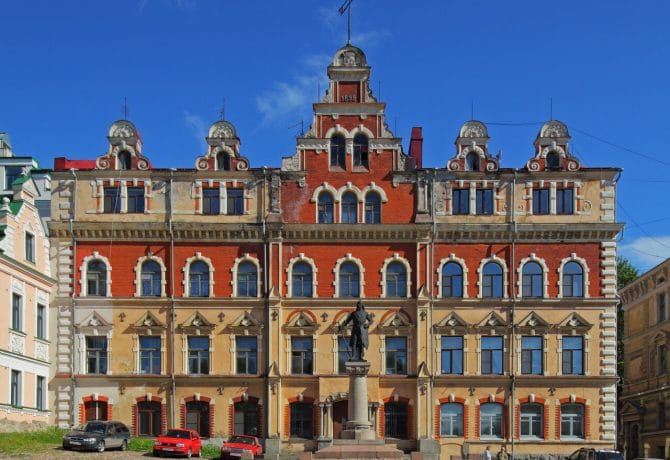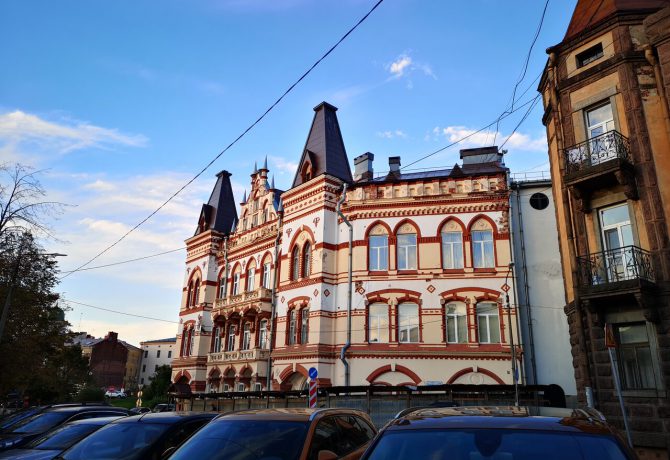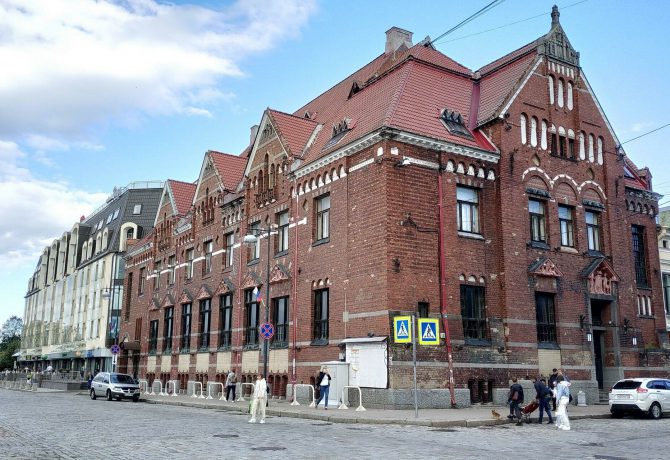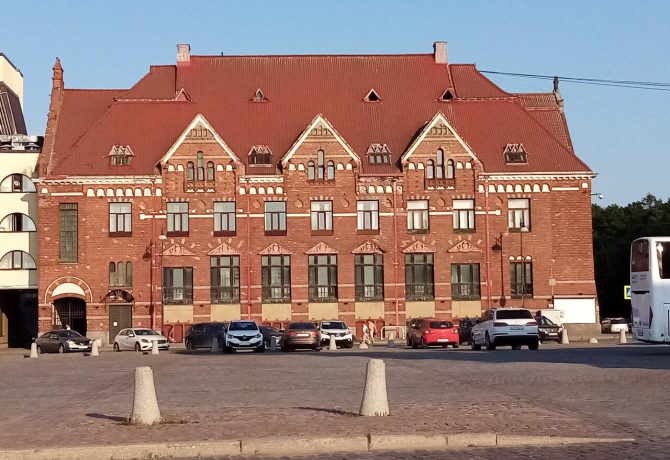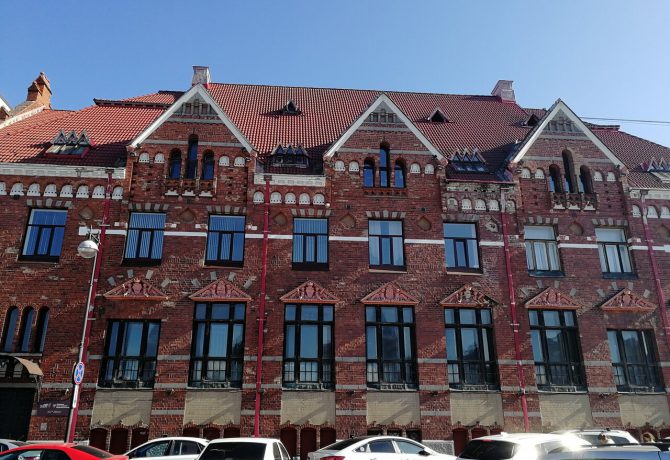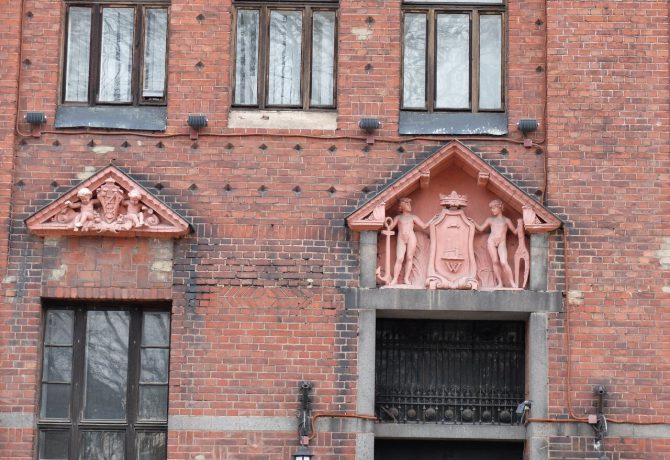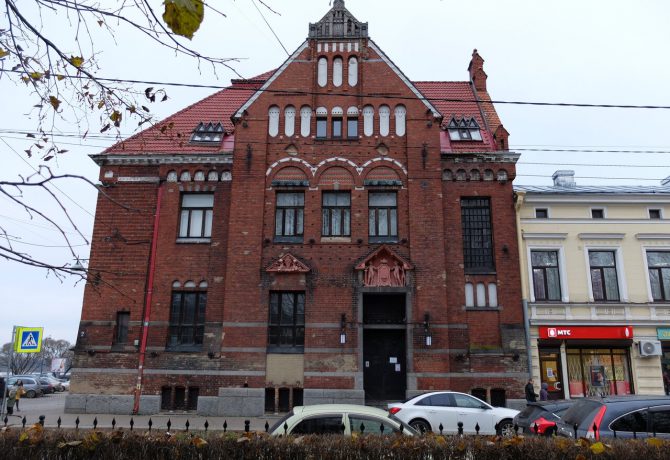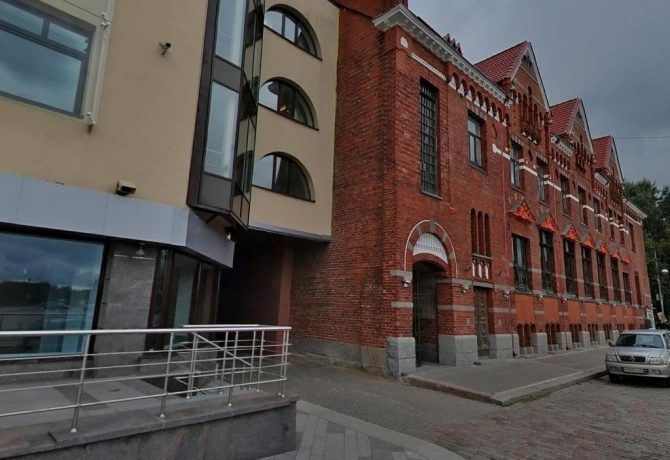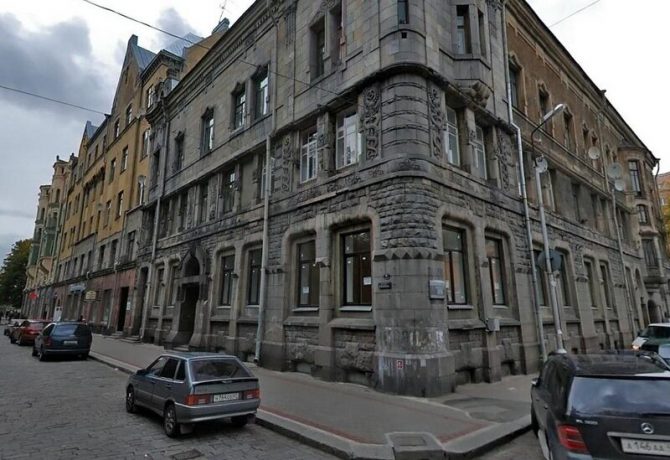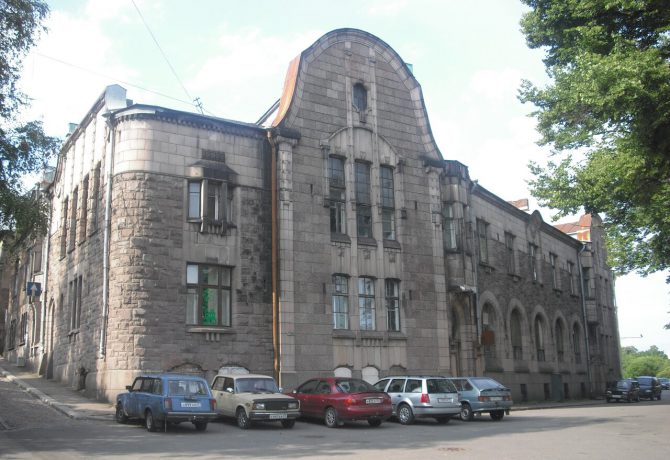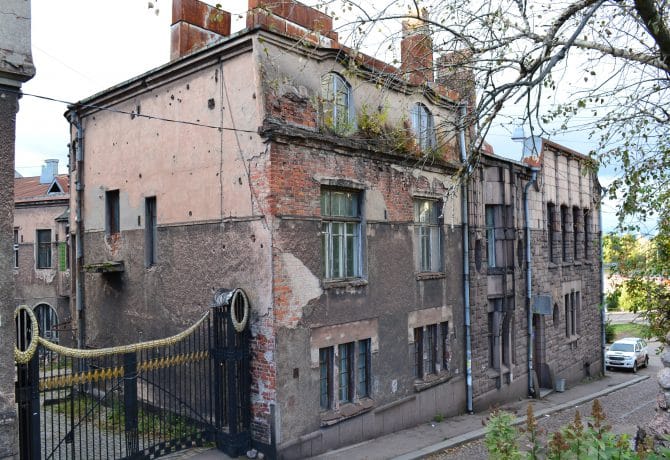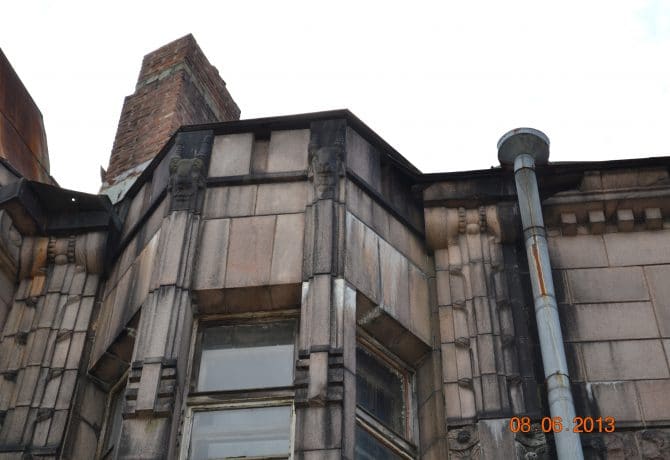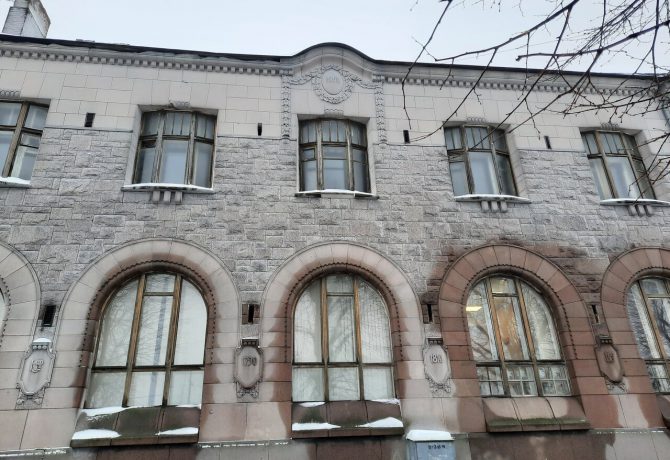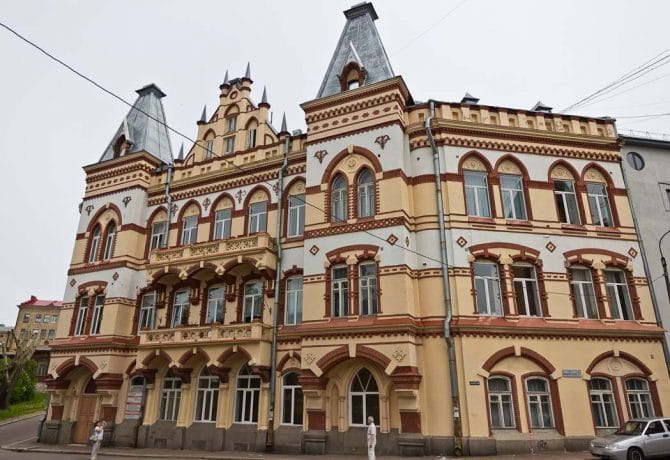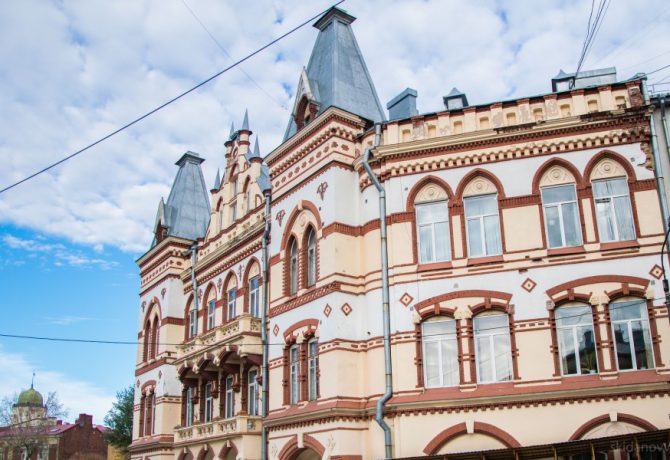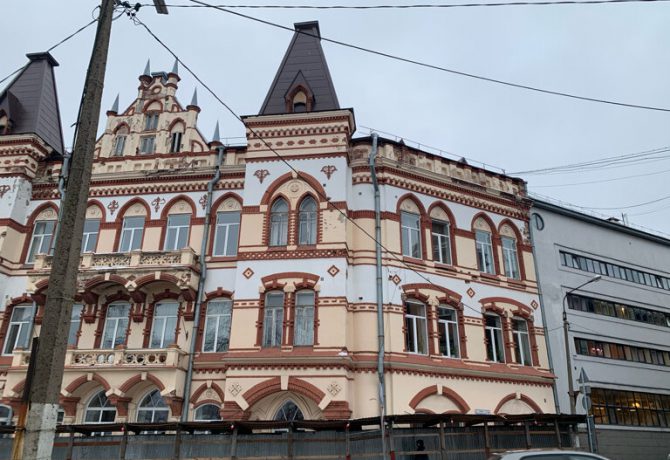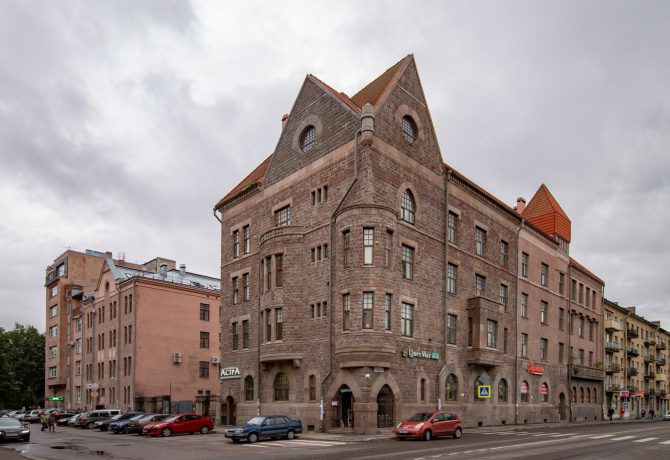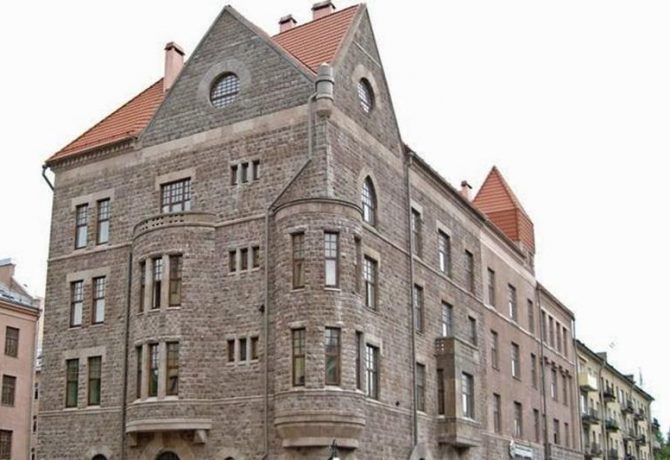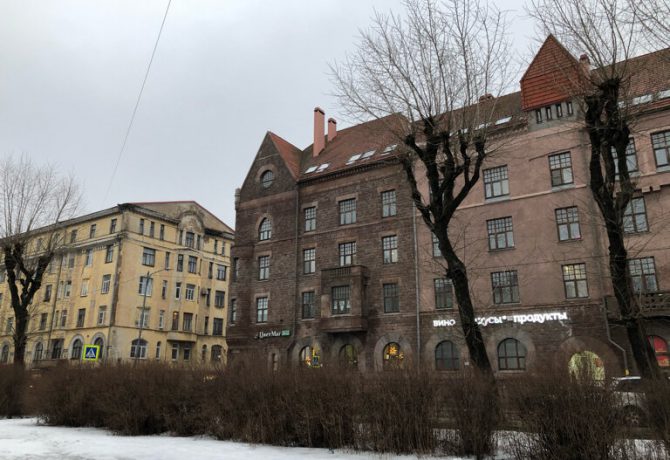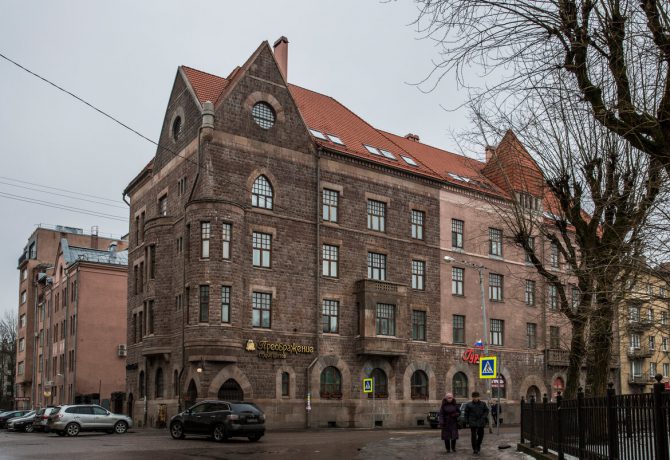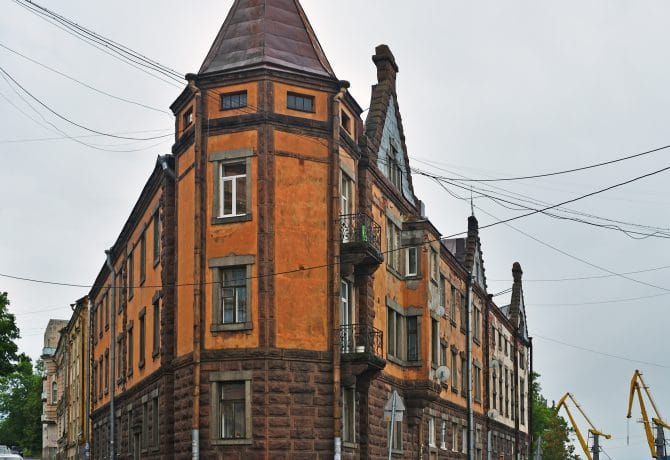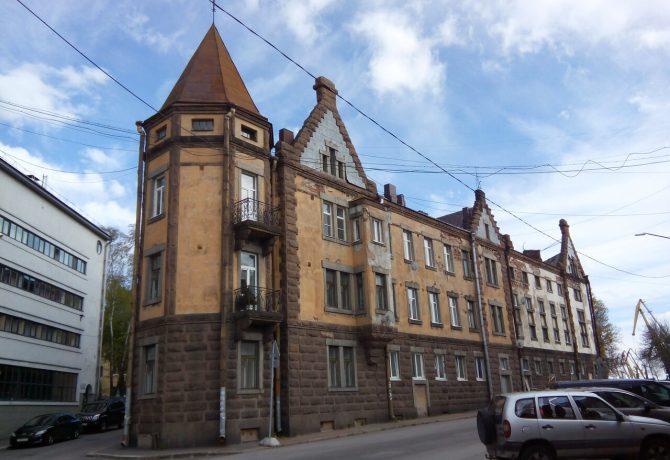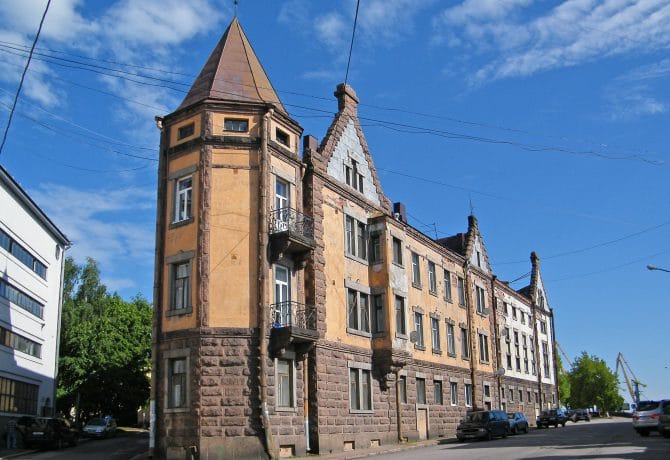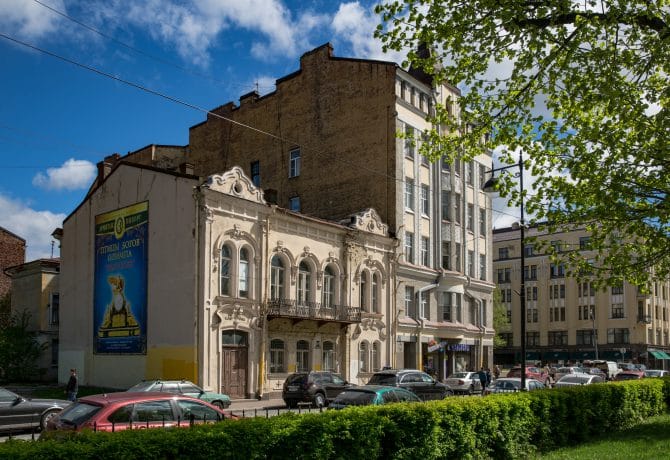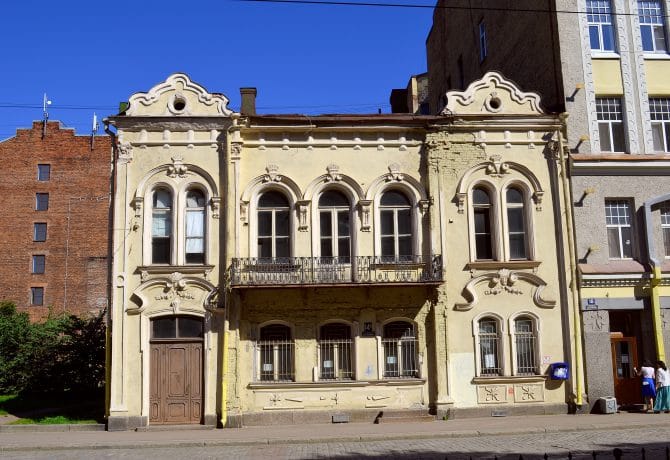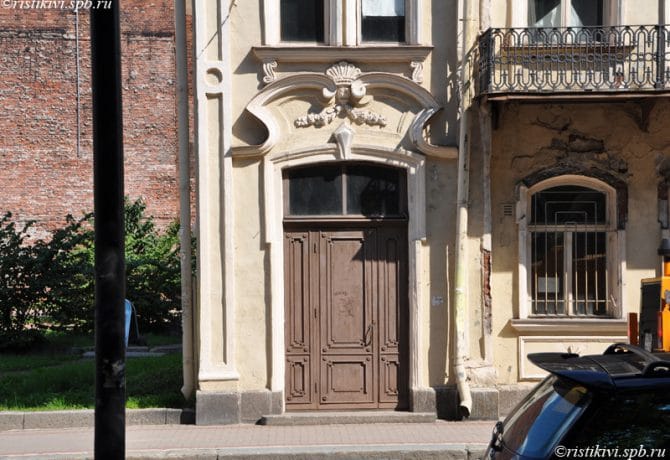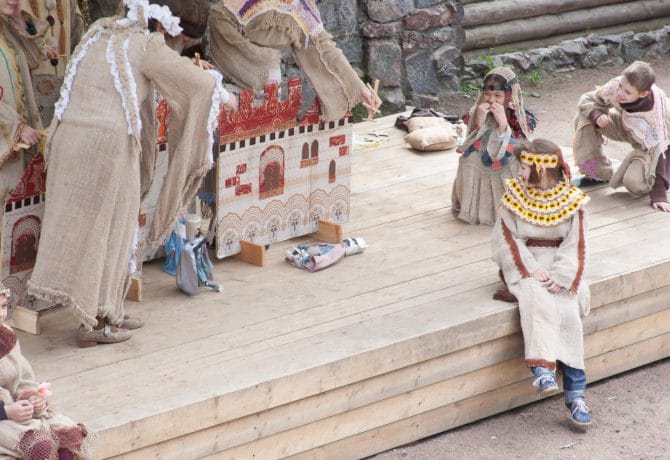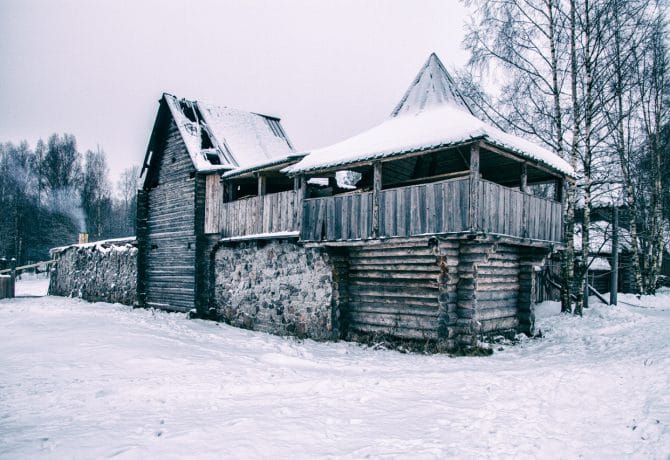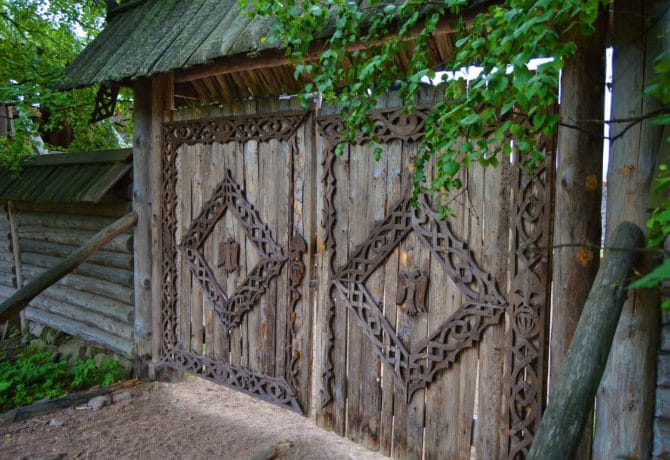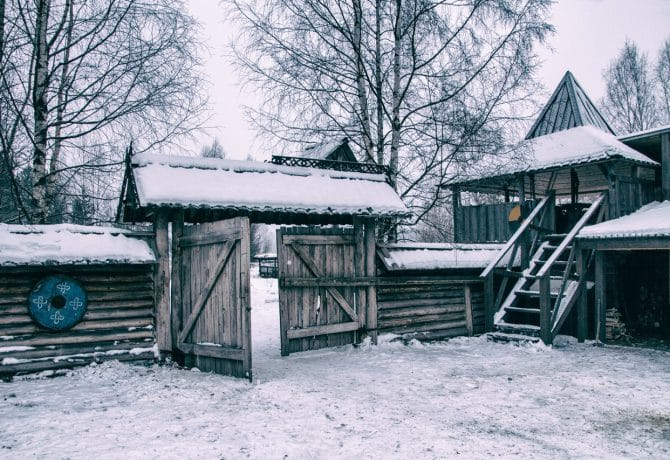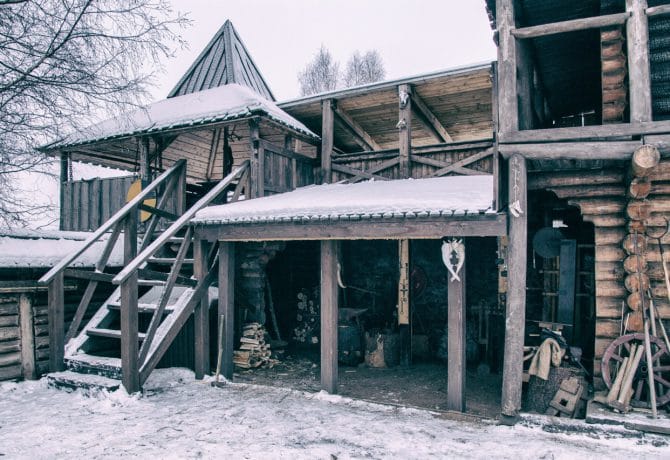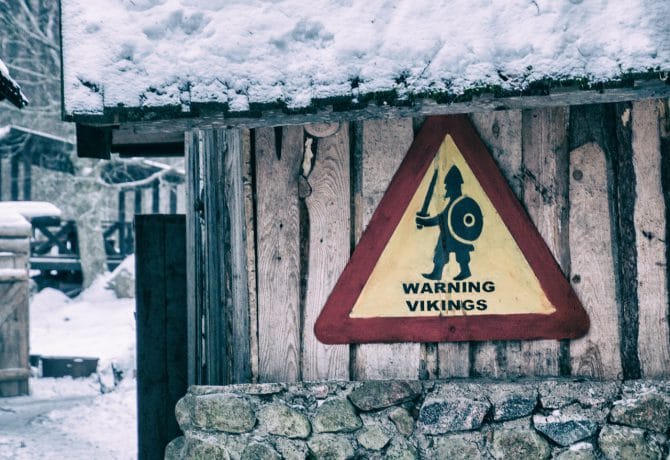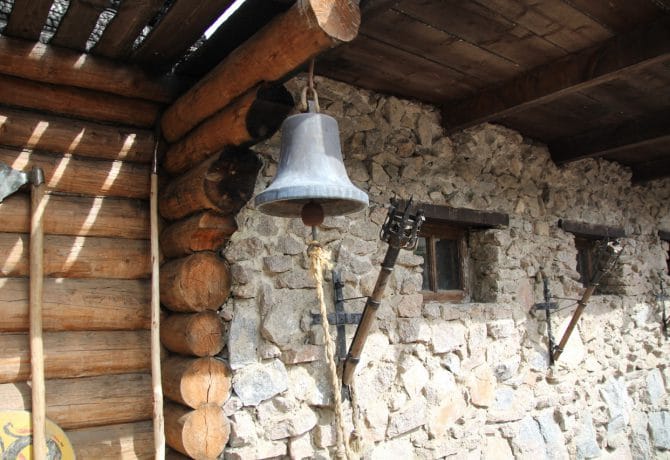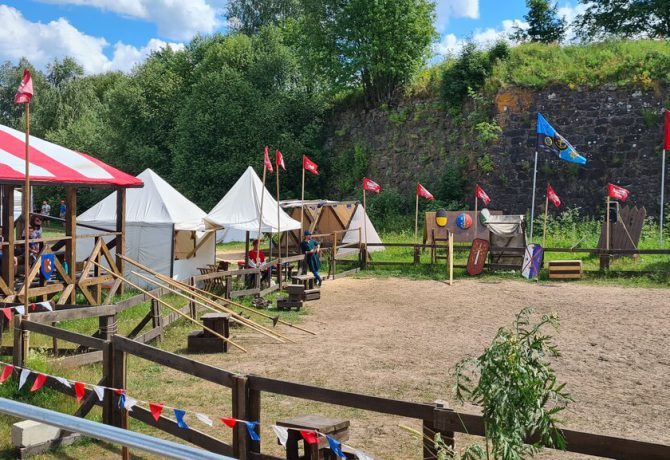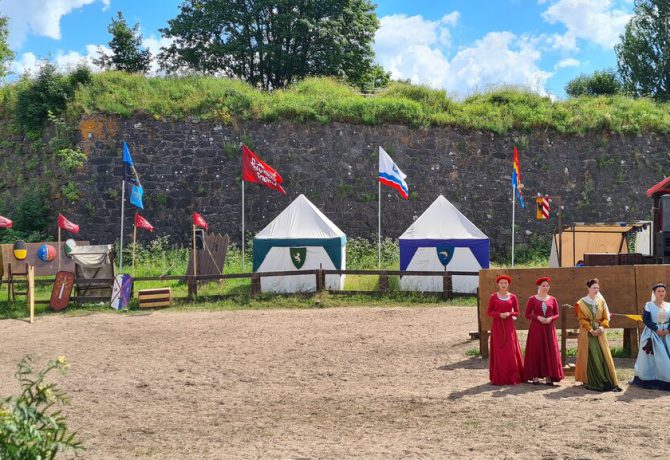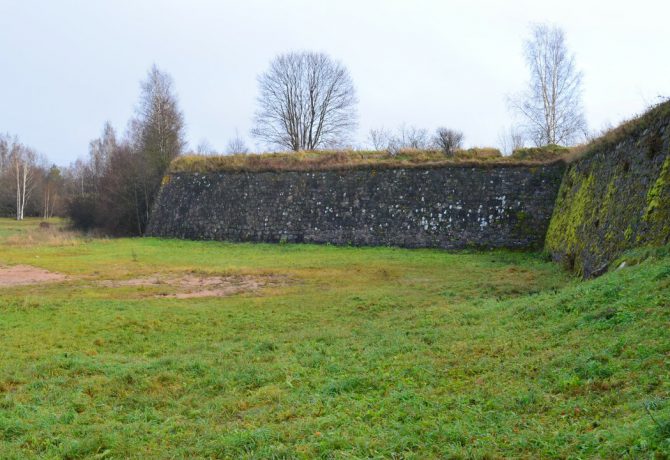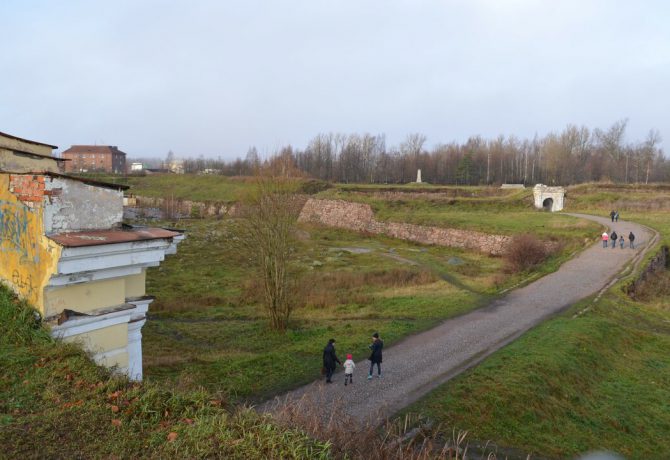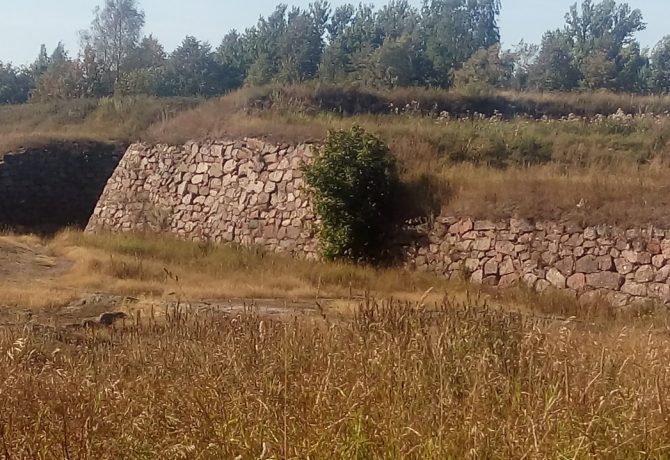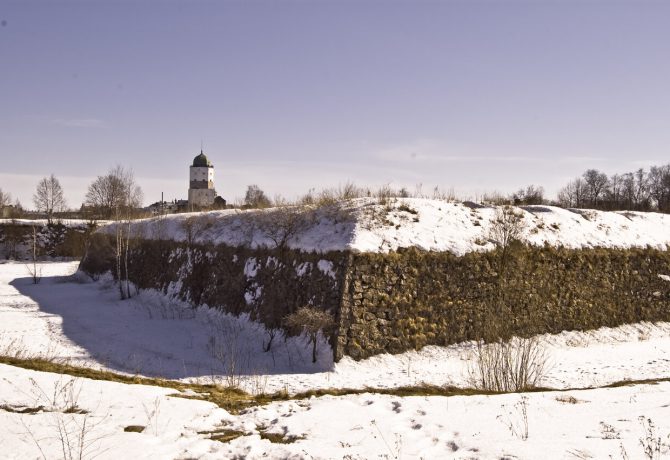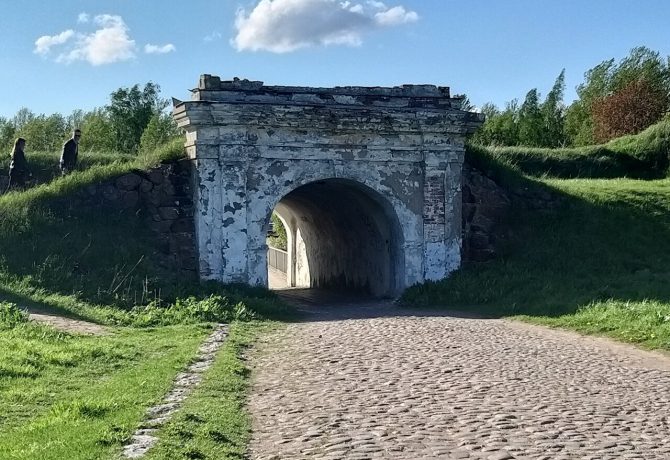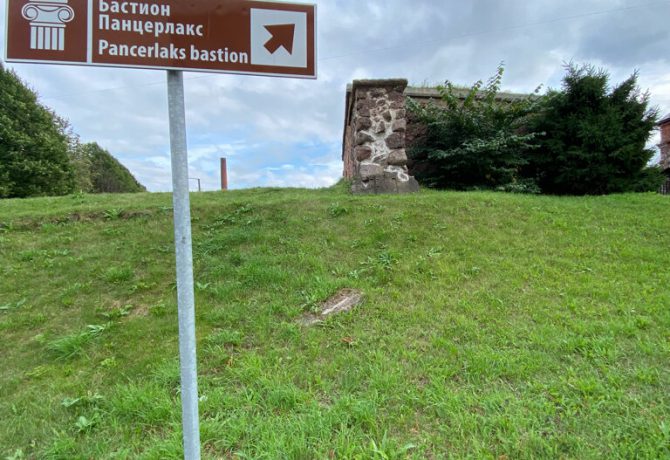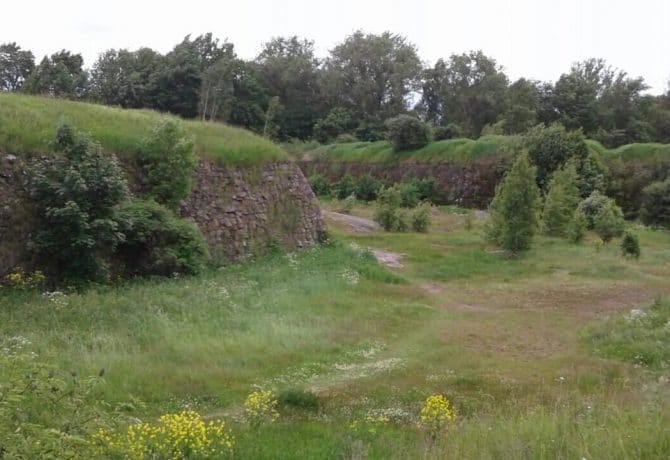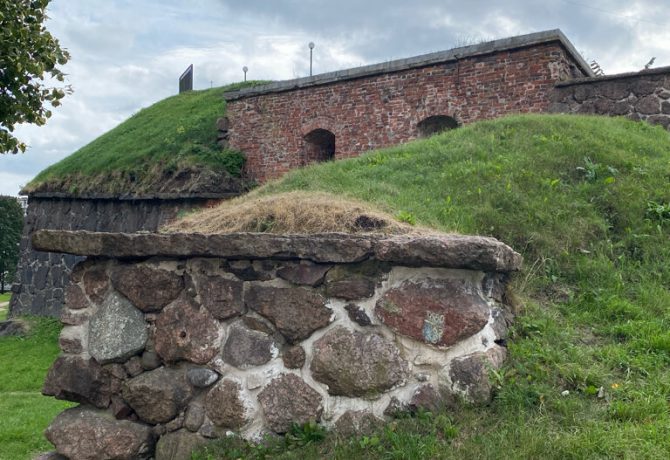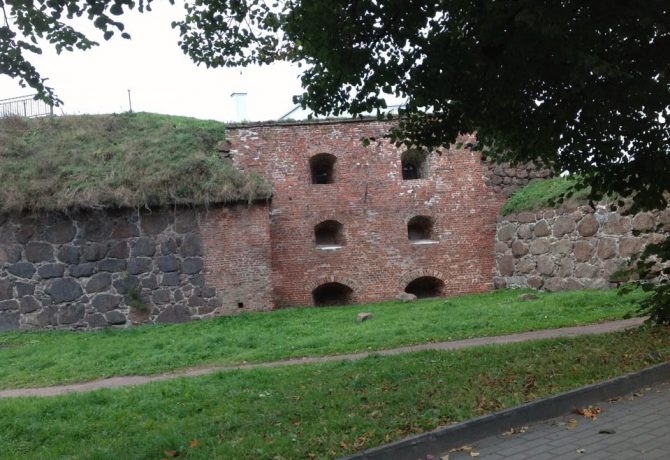Vyborg is a small but very picturesque city with a rich history. Here you can feel the current of Europe: in the architecture of the streets and squares of the city center, uniqueness and authenticity are preserved.
In Vyborg you feel like in a fairy tale, when you see the majestic castles from the Middle Ages, they rise above the island and have experienced many wars and battles.
The city is located 120 km from St. Petersburg, on the Karelian Isthmus. Half an hour away is the border with Finland, so so clearly the influence of Europe is felt here in everything.
Geographically, the city occupies part of the peninsula and several small islets of the Vyborg Bay and the waters of the Protective Bay, together with 54 islands in one municipal association.
The visiting card of Vyborg is a fortress, pavements made of large cobblestones and beautiful bright houses, more like a European city than a Russian one. For better or worse, restorations have been carried out here infrequently, the sights are dim and unflintering, but this is its uniqueness and charm.
What you can see in Vyborg for a few days and leave in memory for a long time, we will tell in this article.
- 1 Alvar Aalto Library
- 2 Hermitage-Vyborg Exhibition Centre
- 3 Alley of Sculptures
- 4 Church of St. Hyacinth
- 5 Clock Tower
- 6 Plaza
- 7 Vyborg Castle
- 8 MonRepos Park
- 9 Military Museum of the Karelian Isthmus
- 10 House of the Merchant Guild of the Holy Spirit
- 11 Burgher’s Manor
- 12 Guild House
- 13 House of Vekrut
- 14 Vyborg Town Hall
- 15 Bank of Finland Building
- 16 Granite Palace
- 17 Dagerman House
- 18 House of Lallukka
- 19 Witch’s House
- 20 Rococo Palace
- 21 Varangian yard
- 22 Annen fortifications
- 23 Bastion Panzerlax
- 24 Attractions Vyborg on map
Alvar Aalto Library
It would seem, why the library in Vyborg is a landmark, than it attracts the attention of tourists? The Alvar Aalto Library is not only a unique local phenomenon, but throughout the country. This is a special cultural and historical object, and every year it is visited by hundreds of guests of the city. The library is named after the architects from Finland who designed and built it. He did not repeat such a building anywhere in our country, and ideal conditions for storing archives and books were created in it, the project turned out to be unique and one of a kind.
The project of the library appeared in 1927, after 7 years everything was built, and now it stores more than 150 thousand books. In the difficult war period, during the Second World War, the unique book depository was closed, and it began to “come to life” only by 1962 under the name “Library named after N. K. Krupskaya”.
Major restoration works made the A. Aalto Library very comfortable for visitors, modern even for the present time, what can we say about the 1930s: there are no windows in the building so that the books do not deteriorate, but at the same time the reading rooms are full of light (the windows are located on the ceiling). The ceiling here resembles the sea, chairs and tables of a unique shape for the convenience of the reader.
The interior is wooden, the concept of unity with nature is sustained. The author decided to make the building open to all: so that adults and children would do useful things together, and books could be borrowed independently.
The charming library building is the most important cultural monument of Vyborg.
Address: Vyborg, Suvorovsky prospect, 4
Hermitage-Vyborg Exhibition Centre
The exhibition center has not only a rich history, but also a unique location on the granite rock of the Panzerlax bastion. The place keeps the memory of different periods of Vyborg’s life: Swedish, Petrovsky and Finnish.
The bastion itself appeared in the 16th century, it became the only Swedish structure of its kind in Russia. Unfortunately, until the early 2000s, it was in decline, but for several years museums began to open on its territory, which helps to maintain the building: the Powder Cellar of Peter’s times, the Museum of Archaeology, the casemate with underground passages and torture. All the sites are interactive, and the effect of presence is created, and in the medieval wall even made a passage.
A staircase carved into the rock will take you to the Museum of Fine Arts, built by a Finnish architect. It is in the halls of this museum that the State Hermitage museum places its temporary exhibitions.
The most recent and modern invention was a virtual concert hall, in which the best performers of the world perform online.
Address: Vyborg, Ladanova str., 1
Alley of Sculptures
The alley of sculptures adorns the space near the famous exhibition center “Hermitage-Vyborg”, created by the decision of the head of the State Hermitage Mikhail Piotrovsky 10 years ago. The first sculptures-copies of the works of the Italian A. Chibei (16th century) were installed on top of the Panzerlax bastion during a profile exhibition there.
A year later, the alley was decorated with several more works: “Venus of Medicine”, “Cupid and Psyche”, “Flora”, “Venus with a butterfly”. All copies of Italian sculptures of the 17th-18th centuries were made in special restoration workshops specifically for the historical bastion, all the heroes “inspect” the city from the height of a high rock. The talented Finnish architect Uno Ulberg developed the idea of creating a landscape and architectural space on the example of this alley of sculptures, and he did it perfectly.
Address: Vyborg, Ladanova str., 1
Church of St. Hyacinth
The church is very noticeable on the old territory of Vyborg, the area appeared in the 16th century Now the Church of St. Hyacinth is a Gothic stone building, and initially the building was wooden, it is obvious that it was not so strong and solid. It is interesting that first there was a temple, and only then a city with planned development, and by the end of the 17th century the church was made in stone, called it the “Knight’s House”. Emperor Paul I personally contributed to the emergence of a church parish here, and the Maltese Order, in turn, developed it materially. Liturgies were conducted by priests of various denominations, and peace reigned in the church.
During the revolution, the building from the inside was more like a communal apartment-parish, and the bombing during the Second World Cup led to great destruction and the closure of the church. Food and things were stored in the ruins. Later there was an art school and an art gallery.
Such unique architectural buildings as the Church of St. Hyacinth in Vyborg, and Russia, quite a few, and it is good that in the 1990s it was recognized as a monument of cultural heritage. The building is qualitatively restored and monitored for its condition. Tourists come to admire the majestic building and touch the rich history.
Address: Vyborg, Vodnoy Zastava, 4
Clock Tower
The famous clock tower of Vyborg is familiar not only to local residents, but also to many tourists as a visiting card of the city.
The history of this place is interesting, because initially the building was built as a bell tower to the temple. The Pope himself in the 15th century called for the erection of a temple in Vyborg, promising to adone the sins of many who will participate. The temple was built very quickly, and even of stone, and the current clock tower was planned as a bell tower. Only in the 18th century, a clock was installed on it, which throughout history has repeatedly suffered disaster during wars and fires.
In the 18th century, Empress Anna Ioannovna ordered to put taxes of local citizens on the repair of the tower, and later Catherine the Great presented a bell, which for more than 200 years gives the city its ringing.
Like any tall building, the clock tower in Soviet times became an observation deck, from it they admired the city, but not for long: during the restorations, the tower was not fortified enough to become an observation deck, they first of all cherished the appearance. By the summer of [y], thorough architectural work from the museum-reserve finally prepared the clock tower to receive tourists at altitude, including the clockwork.
Address: 7, Krestovnaya street
Plaza
In any ancient city there is a market square, and in Vyborg it is also there, only very different from others. It presents a “set” of three squares on one diagonal between the other streets. From here begins Lenin Street, and there is a park of the same name.
A few centuries ago in this place there were fortifications of the Horned Fortress, which is now gone, but the place was not empty. True, there is a small reminder of the fortress here: this is the Round Corner Tower and part of the masonry of the wall.
Trade was the main theme of life of many families, the area was popular and necessary in the city. Each seller had his own place, even peasants could come with their goods and get a place. At the beginning of the 20th century, a covered market was built, and earlier it was one of the towers of the fortress with a clock. At that time, the market was the best not only in Russia, but also in Scandinavia.
The square is surrounded by buildings of banks and local administration in the Neo-Renaissan style.
Vyborg Castle
The castle in Vyborg is a very popular place 120 km from St. Petersburg, it is located on the castle island and stands out due to the architecturally unusual tower of St. Olaf. You can climb it and explore the surroundings of Vyborg. The fortress, or castle, was built in the 13th century by the Swedes, they controlled the territory of the 4th century. Now it is part of the museum-reserve, like many other historical monuments of Vyborg. Very consistent with the atmosphere of the place jousting tournaments, which are arranged here, concerts and holidays, hold exhibitions.
If you want to learn more about the Russian Middle Ages, see unique museum values and take part in master classes, then welcome to Vyborg Castle. For many years, the symbol of the place is also the cat Philemon, it is no less popular than the place itself.
Address: Vyborg, Zamkovyi, 1
MonRepos Park
A beautiful museum-reserve is located on the territory of Vyborg and the beauty is not inferior to the suburbs of St. Petersburg. The name in French means “the place of my rest”, so the Duke of Württemberg spoke about the park.
Barons Nicolai also inscribed their name in history, when they rebuilt the park, brought elegant sculptures and updated the living quarters.
The park survived the Second World War, and already in peacetime there was a recreation center and a kindergarten. During the war, divisions were located here and a hospital was located.
Mon Repos has great cultural and historical significance, but despite this it was used simply for the rest of the citizens, which had a negative impact on the landscape and the situation as a whole. It is good that public figures did not leave this without attention, and Mon Repos was awarded the title of museum-reserve. Now the park is under state protection, and each object in it speaks of history, famous owners, artists and writers who were inspired by the local nature.
Address: Vyborg, Mon repos Park, 19
Military Museum of the Karelian Isthmus
This museum is young and created on a private initiative, the historian Bair Irincheev started this good thing at his own expense. For 5 years, the museum has existed in the Military Town of Vyborg. More than 2000 exhibits appeared here from private collections and finds of search engines. Museum staff not only receive tourists here, but also organize field trips to the places of the Soviet-Finnish war.
All exhibits, including models of weapons, can be picked up, and military uniforms can be tried on. Many guests note not only the uniqueness of the exhibits in the museum, but also the excellent organization of the exposition, interactive halls and showcases, but most importantly the love of employees to their work. Any wartime is very difficult to describe, especially to feel the efforts of soldiers and home front workers, and the museum guides convey this perfectly.
What is included in the collection: weapons of the war, items from the battlefields, photos of the pre-war city, newspapers, leaflets and books.
On the territory there is a monument aircraft, as well as a model of a tank from the film “28 Panfilov”.
Address: 26 Krestovnaya street, Vyborg
House of the Merchant Guild of the Holy Spirit
This house is the oldest stone building in Vyborg, dating from the end of the 14th century. How it was created: with the help of raw boulders, but the house does not look massive, but on the contrary unique and easy. Next to the neighboring “ordinary” houses, it looks strange, but it is also interesting. Tourists call it a souvenir from the “Swedish time” of Vyborg.
Since ancient times, Vyborg has been the main trading city, a port, and much attention was paid to the comfort of merchants. Special houses were created where discussions of transactions and receptions of foreign guests were held. The building of that time did not make large windows, not everyone could afford it, and it was unsafe at that time to make the house available for attacks.
According to legend, the owner of this house was a merchant, cared for him, but over time, the first floor still sank a little underground. In ancient times, a merchant stored his goods in the basement, and in one of the rooms of the house he concluded trade contracts. At the end of the last century, the building was restored, and it looks more modern, but still the House of the Merchant Guild reminds the city of a rich past.
Address: Vyborg, Vyborgskaya str., 8
Burgher’s Manor
The estate is a whole complex of buildings from the Middle Ages: the house of the townsman and the house of the carriage house are well preserved, only the foundations remain from the rest. Presumably, it was built in the 16-17 centuries, and then Vyborg was not rebuilt. The walls of the estate are made of boulders, the buildings also look powerful, but inside the room is very small. In ancient times, on the first floor there was a workshop and a warehouse, on the second – a kitchen and meeting rooms, and on the third bedroom. In the 1970s, the estate was restored, but the medieval architecture was preserved.
Next to the house of the townsman there were stables, and on the gate there are forged parts. The maintenance of horses was taken seriously: they had large utility rooms for hay and inventory.
Now this historic house houses a tourist center, a small museum and a restaurant.
Address: Vyborg, Progonnaya street, 7A
Guild House
It is believed that the Guild House was built in the 16th century, it is a one-story building of granite boulders. It appeared in the city before a large-scale redevelopment in the 1640s and was a meeting place for merchants of various guilds. In those days, it was surrounded by other buildings, in the neighborhood was the House of the Merchant Guild of the Holy Spirit. It can be safely called a small house-fortress, such a house of the burgher. By the way, such fortified houses in the European style can be found only in Vyborg.
The Swedish government had a lot of weight in Vyborg for 4 centuries, and according to their rules, merchants had to meet in a special place, so such houses were created.
Representatives of each profession knew where to find help and support. So the first professional associations in our country appeared.
In Soviet times, the most ordinary garage was added to this historic building, and during the war the place was very damaged. The restoration took place, and the house was occupied by the offices of the city power grid service. Only in 2016, the Guild House was included in the museum “Vyborg Castle” and took over a collection of exhibits.
Address: Vyborg, Vyborgskaya str.
House of Vekrut
The house was built in the late 17th century, changed several owners and became known as the latter, the merchant Johan Vekrut. He was not only a relative of the head of the region, but also a successful hereditary merchant. It is said that his family was so rich that the floors in the house were washed with white wine, and the leftovers were wiped with bread. Unfortunately, all the wealth his son squandered, and the house was transferred to the state. There were customs offices here, then a hotel, but still eventually passed to a good owner, who restored it in the style of the “Baltic Renaissance”.
When Catherine II went to Finland, on the way she stopped in this house, received the richest people of the city. That visit of the Empress Vyborg remembered for a long time, a luxurious reception was arranged. Like many houses in Soviet times, it was given over to apartments, suffered from a domestic fire. A few years ago, repair work brought the House of Vekrut in proper shape, and now every guest of the city can admire the centuries-old beauty.
Vyborg Town Hall
The Old Town Hall is a very elegant building in Vyborg, despite its age. At the end of the 17th century it was the tallest building in the city. Numerous military actions did not spare the town hall, and the building was so spoiled that it began to be used as a warehouse, and its functionality was shifted to another, beautiful, in the Renaissance style. To fit everything in it, built additional floors, increased the area. No war spares neither people nor buildings, and all that remains of the town hall after the invasion of the Nazis was given to apartments in the postwar period. In 1985, the building was included in the list of cultural heritage of Vyborg, it helps to keep such a beautiful place in good condition.
Now it is a popular tourist place, lined with natural stone and brick, and there are many such town halls.
Any historical building can be converted into any room, but it is more valuable to preserve its charm and spirit of centuries.
Bank of Finland Building
In the history of Vyborg there was a whole period of domination of the Finnish government, and then it was necessary to mark the branches of Finnish banks here, in the Russian provinces. The buildings were created with great attention, invited eminent architects.
On the Market Square, a red brick building was erected with an attic and a multi-colored tiled roof. We tried to create a style of Modern or Neo-Gothic. The bank manager lived here, but it was imperceptible, and in general the bank very harmoniously fit into the general development, the city park is also nearby. Even after the war, the historic building also had a bank, then the executive committee of local deputies. In the war, the bright tiles from the roof were lost, and unfortunately, they did not restore them. Also disappeared some emblems on the facade, but in any case, the bank building is very famous and noticeable in Vyborg.
Address: Vyborg, Lenina avenue, 2
Granite Palace
Not far from the Vyborg Castle there is a beautiful house in the Art Nouveau style – the Granite Palace. No tourist route is complete without it. The house differs from many in Vyborg with its strict forms and floral ornament in the decoration. The architects were inspired by the nature of the area, and on the facades there are images of northern rock landscapes.
The granite palace has a second name – the Hakman House, and was built by Finnish architects for a large timber trading company. The owners later founded in Vyborg and a school of arts, a museum and an association of sisters of mercy.
The name of the family that did so much for the city was known both then and now, but the name of the Granite Palace is even more suitable for the structure because of its decoration with natural stone.
During the Soviet-Finnish war, the Hackmans left the country, and the granite palace was destroyed and saw only vandals. All the valuables that were under the owners were lost, especially when there were apartments here. Nowadays, we can only appreciate the beauty of the façade, but not the interiors.
Address: Vyborg, Severny Val str., 7/ Podgornaya, 16
Dagerman House
The house in the neo-Gothic style appeared in Vyborg at the end of the 19th century according to the project of the architect Aspelin. It was planned as a residential building, and for a long time it was, even during the war it was not badly damaged. Later, it housed a night school, a pedagogical college, and now a local branch of the Pushkin University. Despite its age, the house looks good, and restoration helps, but still the facade is a little destroyed.
The bright decoration of the house and its interesting architecture attracted once the ambassador of Denmark and Germany, they lived in this house for some time.
Address: Vyborg, Vyborgskaya str., 2
House of Lallukka
The house of Lallukka is known in the city, is located on the Station Square and stands out among the other buildings. It was built in 1906 for a large trading company of the same name, was one of the 4z in which they lived and worked. Profits were also made from renting a room to rich people. Lallukka mam came out of the peasants and became so rich thanks to the trade in colonial goods. He was a philanthropist, actively supported the cultural life of Vyborg and theaters in particular.
To finish the house, the architects used red granite, which was harmoniously combined with paving stones, the corner of the structure ends with an elegant turret, the facade is decorated with sculptures in the form of female figures.
Bombing and fires during the war spared nothing, and all such beauty was lost. The restoration was immediately after the fighting, but much never returned to either the facade or the interior.
Address: Vyborg, Vokzalnaya street, 7
Witch’s House
When you walk through the streets of Vyborg, there are a lot of old buildings around, and the so-called Witch’s house is not immediately noticed. Why? The building of 1898 has a unique structure: one of the walls is not, and it can be seen from a certain angle. Why this was done, and who lived in such a house, this question is of interest to many. They say that there is something similar in Odessa, but the Witch’s House as soon as it is called: Card, iron house. We understand that Siena is in place, you can just see it from a certain angle, such an architectural solution.
Address: Vyborg, Vyborgskaya street, 1, 1a
Rococo Palace
A beautiful mansion of 2 floors was built in 1883, in the neo-oroccoco style. In Vyborg, this is nowhere else to be found, it belonged to the merchant Sergeev. The façade is richly decorated with figures of Atlanteans, although the structure itself is small.
Merchant Sergeev was very influential in the city, trading everything from bread and beer to ships and timber. His request to the architect to create the most beautiful house was fulfilled, and became for the master a “swan song”, but how bright!
Address: Vyborg, Lenin Avenue, 14A
Varangian yard
The surroundings of Vyborg are no less interesting than the city itself, and not far from the village of Vozrozhdenie along the Svetogorsk highway is the Varangian Court complex, a real medieval city of Svargas. In translation, the name means “Sunny sky”, and indeed, that the day in this place will be memorable and sunny for you. You will learn how the Vikings lived, in a very harsh environment of the Middle Ages, were skilled blacksmiths, conducted mystical rites, traded, fought and celebrated holidays.
Address: Vyborg, Svetogorskoe highway, 9 km
Annen fortifications
The fortifications are named after Empress Anna Ioannovna and are the largest military buildings of the 18th century in Vyborg. This is a rare monument of Russian architecture in the military sphere, has the shape of a crown with towers at the corners, about 1 km long. As protection, ramparts were poured and ditches were made, and counterguards were erected.
In the time of Peter I, the fortifications were damaged, and then they found out how weak they were during well-prepared attacks. The medieval castle by that time was completely outdated, and then the border fortress was strengthened in case of the arrival of the Swedish interventionists.
Address: Vyborg, Petrovskaya emb., 1
Bastion Panzerlax
By the beginning of the 16th century, the population of Vyborg was actively growing, and the inhabitants settled around the fortress walls, although this was not allowed, the walls needed to be expanded. The Swedish government gave instructions to the engineers-fortifiers, and at the end of the 16th century a new impregnable fortress appeared around the city: several bastions lined with granite. Inside were garrisons and ammunition depots. The name of the most famous bastion Panzerlax translates as “shield of the bay”.
In the 18th century, this bastion was strategically important, the condition was regularly monitored and restored by engineering structures in the first place. Very often the ceilings were restored, the cellar – nothing more. The city grew, and the bastion lost its protective function. Factories and shops became more important and necessary, so the “Horned Fortress” was demolished, and the bastion was left, appreciated as an architectural landmark. About 100 years ago, an art school and a museum were organized in the bastion, but they suffered greatly from fires during the Second World War.
Nowadays, such ancient buildings like to place restaurants, or hotels, at best a branch of the museum.
The Panzerlax Bastion is now a branch of the State Hermitage, and now not only an ancient bastion is preserved in Vyborg, but also a collection of museum exhibits.
Address: Vyborg, Ladanova, 1
Now Vyborg is a Russian city, but for many centuries in a row it lived according to European rules, and in architecture it was not inferior to foreign capitals. Still getting here, you found yourself in a medieval fairy tale, be sure to come here on vacation and travel back in time.

